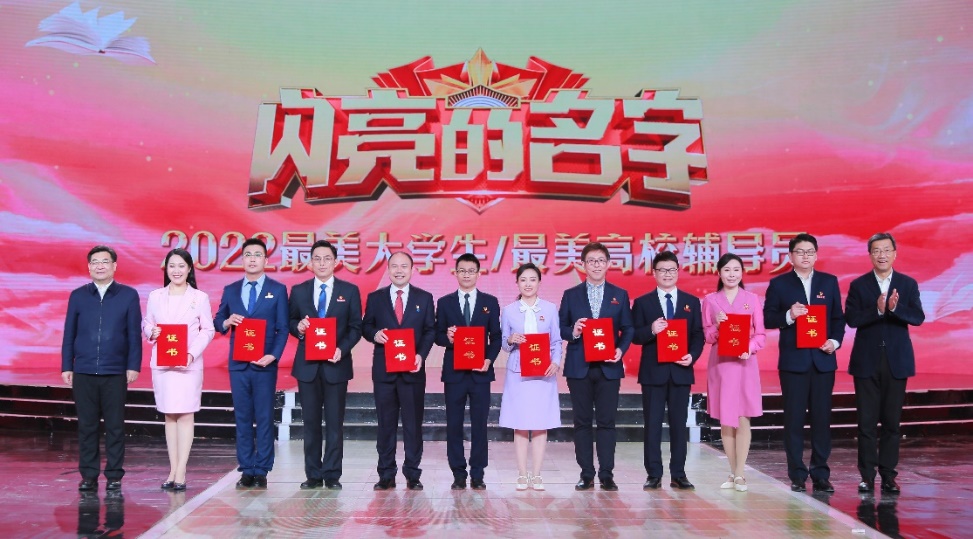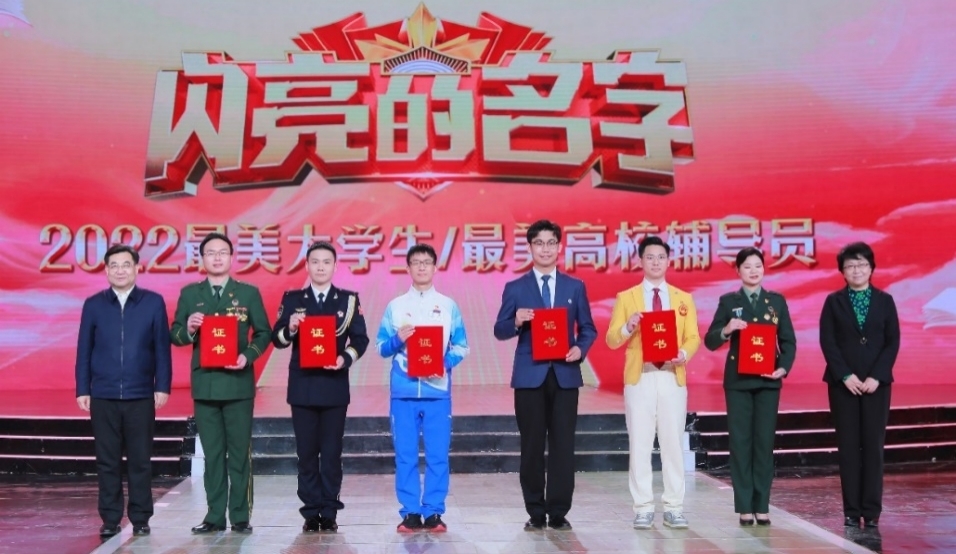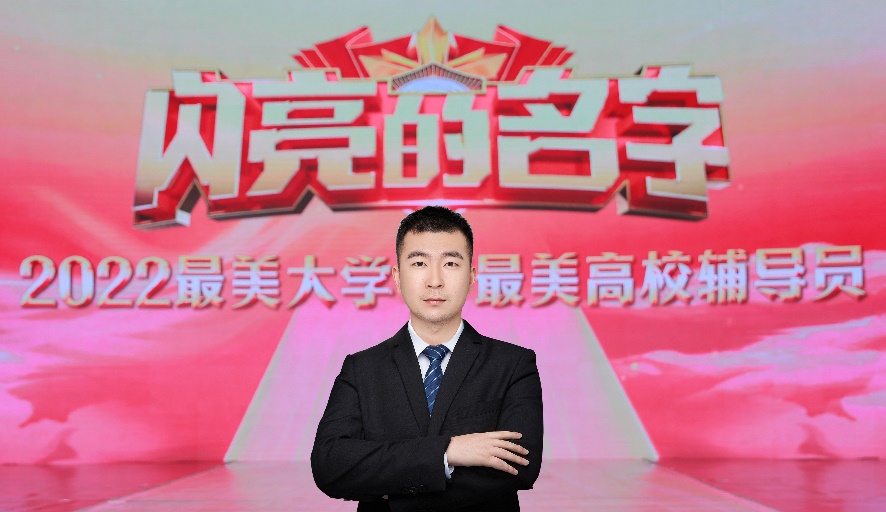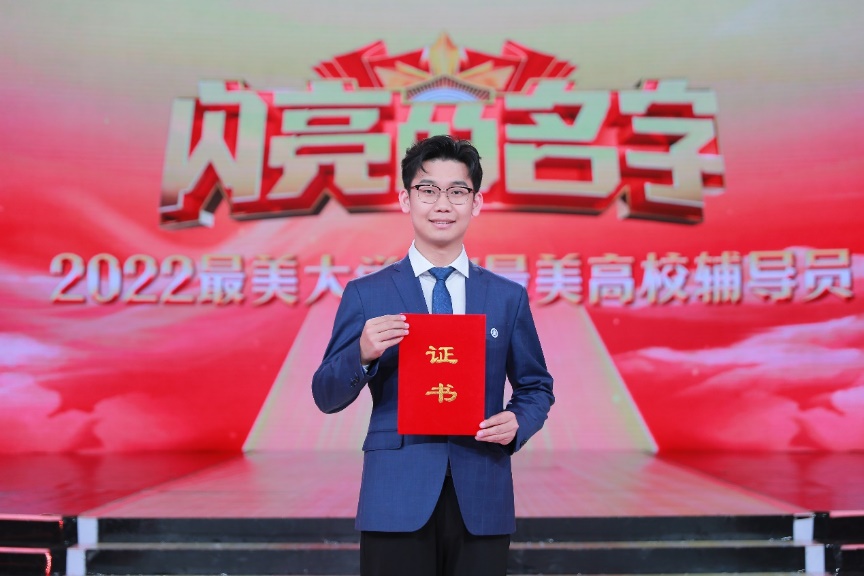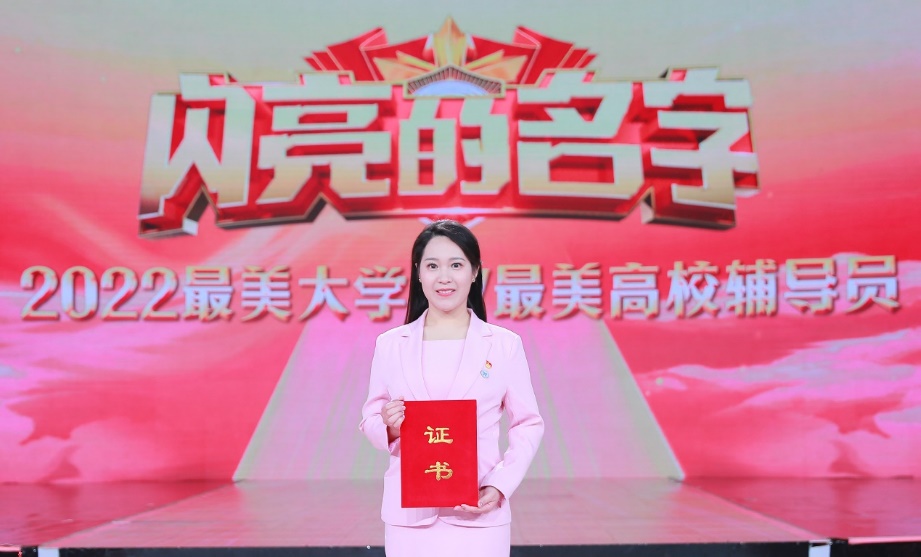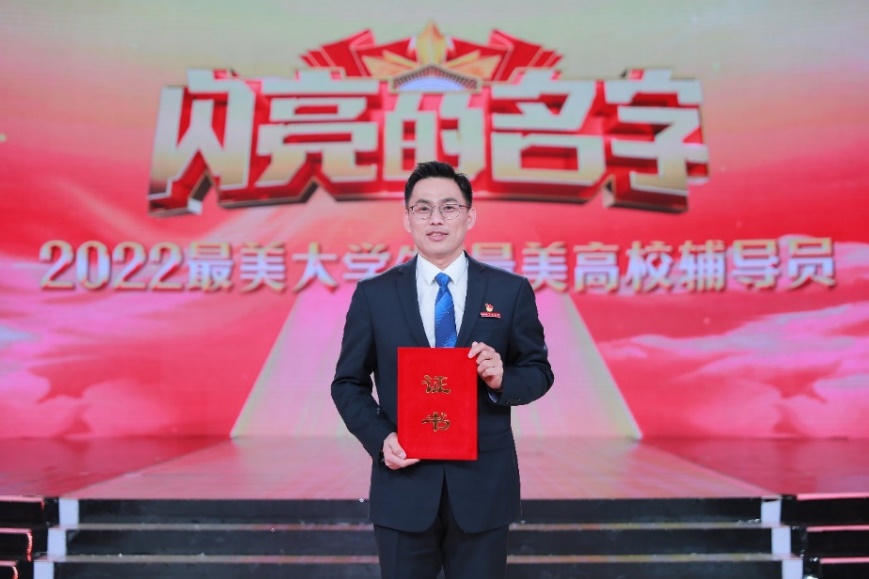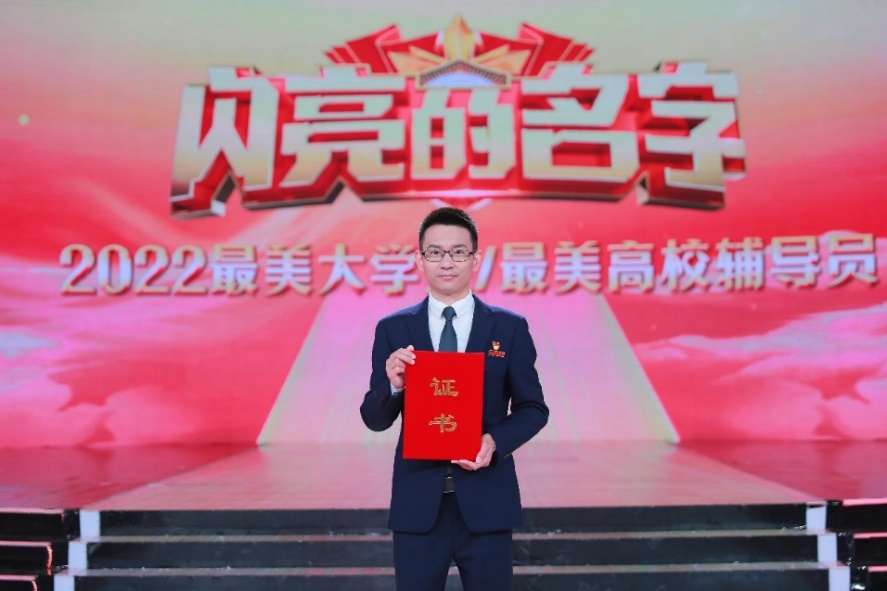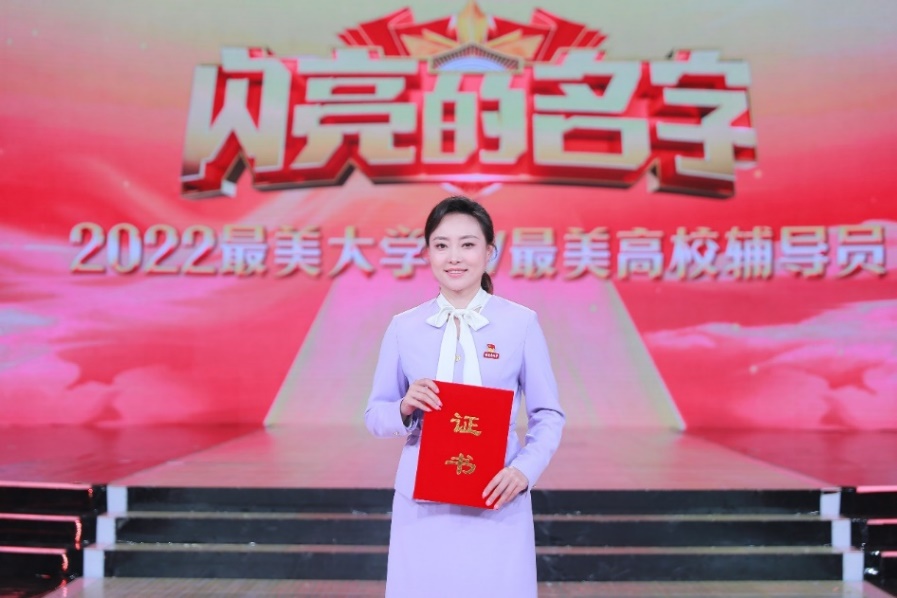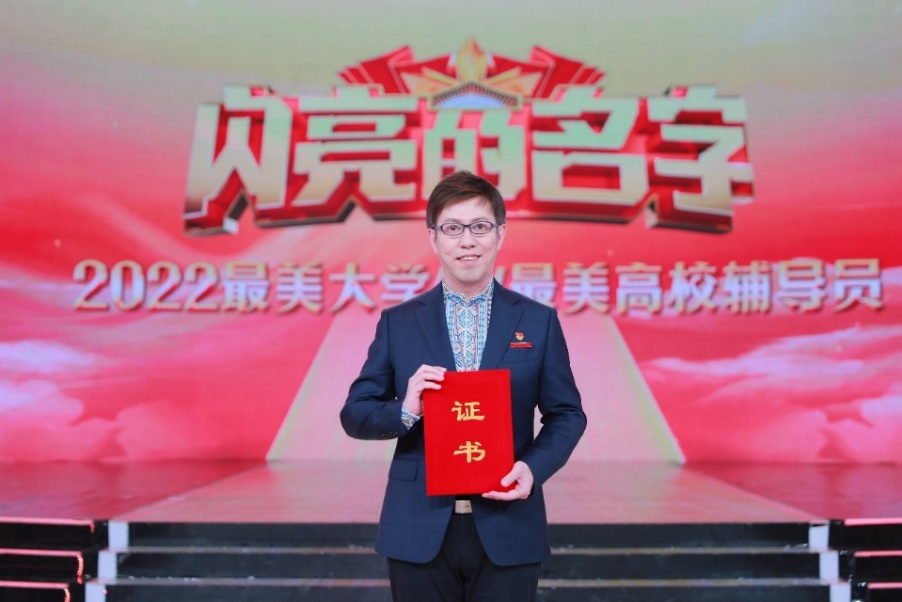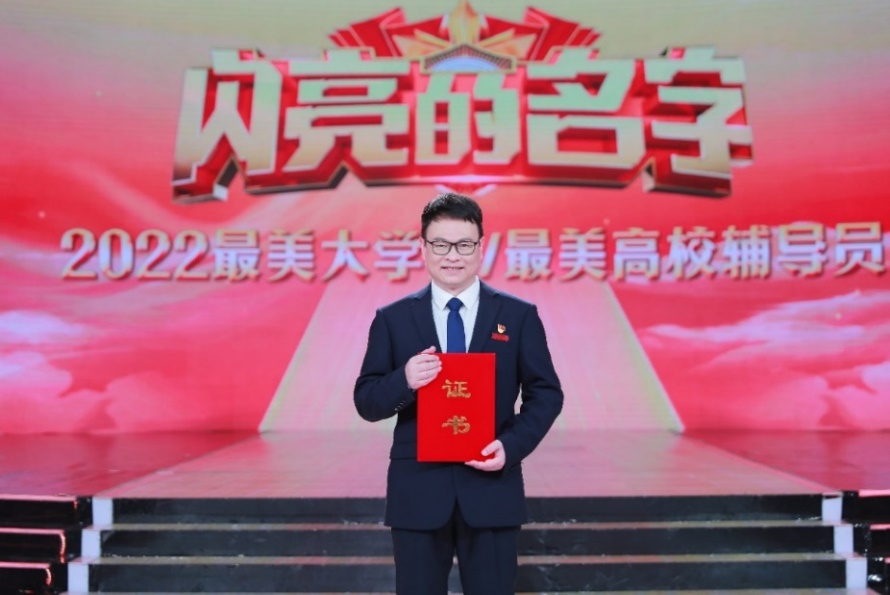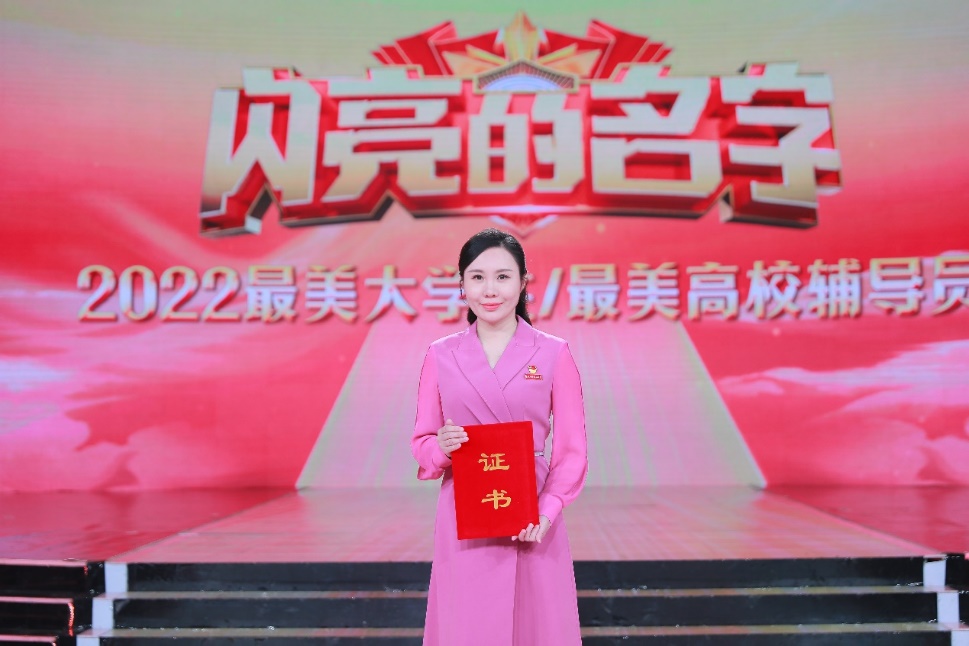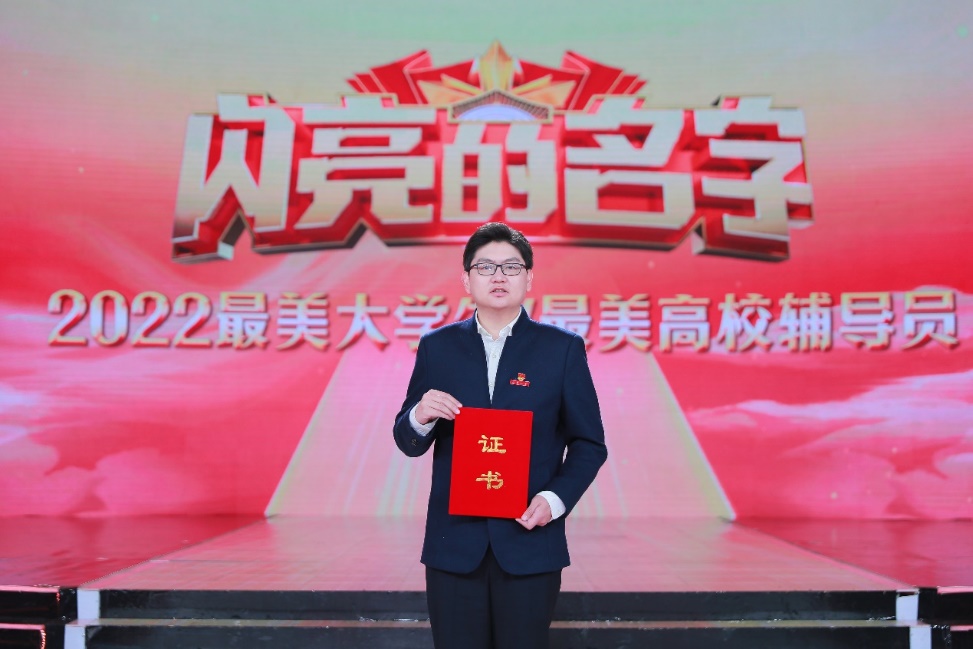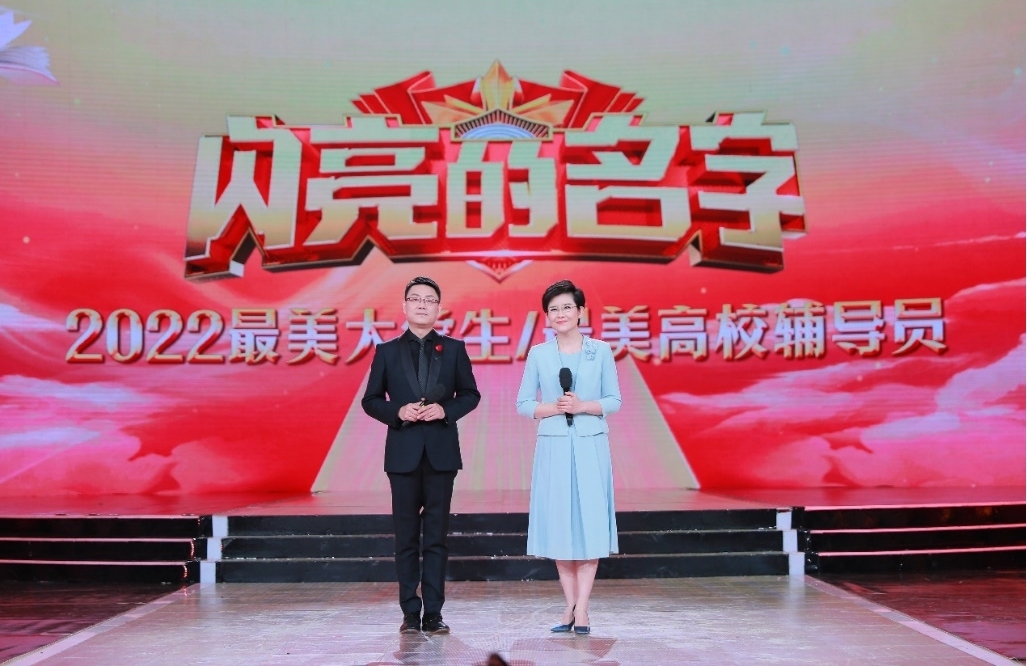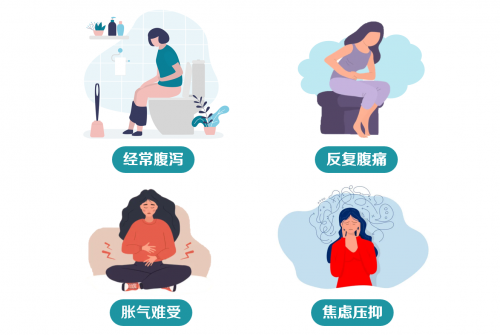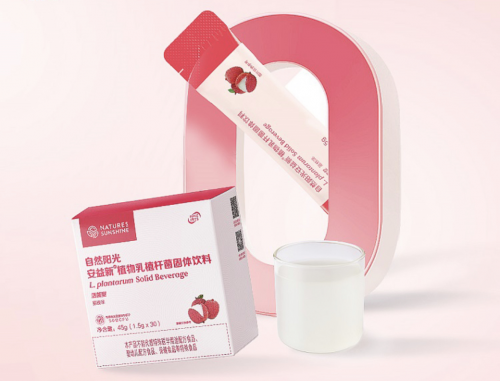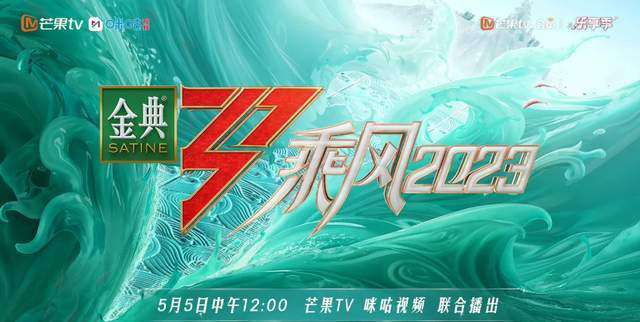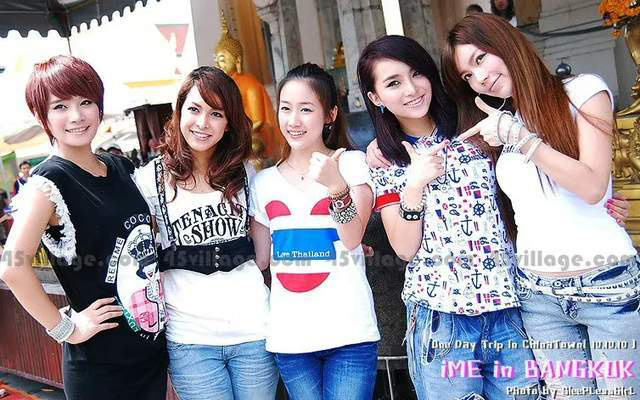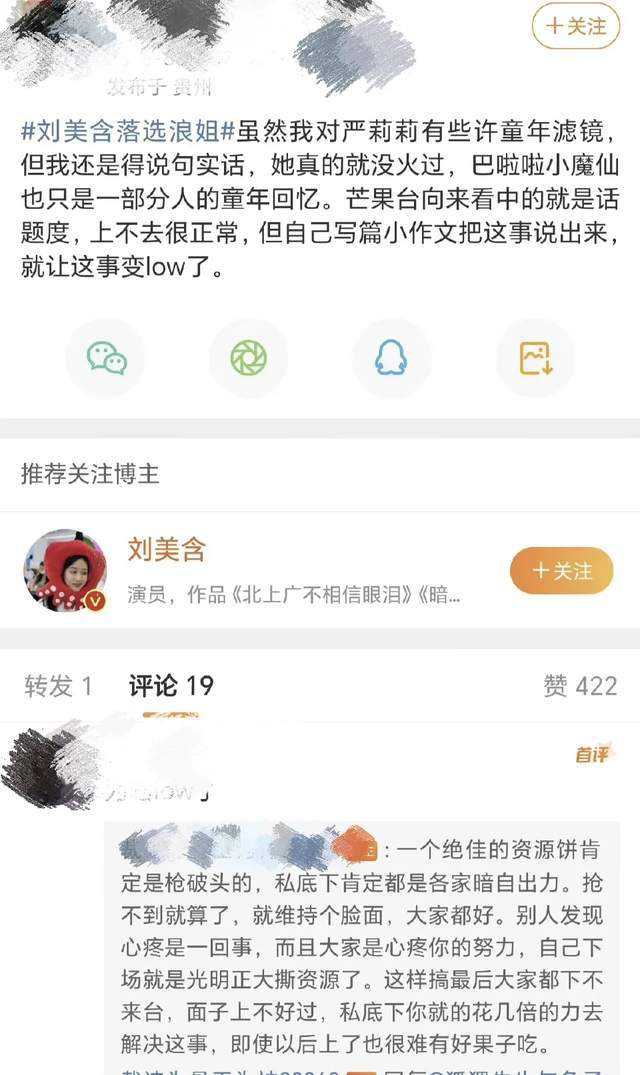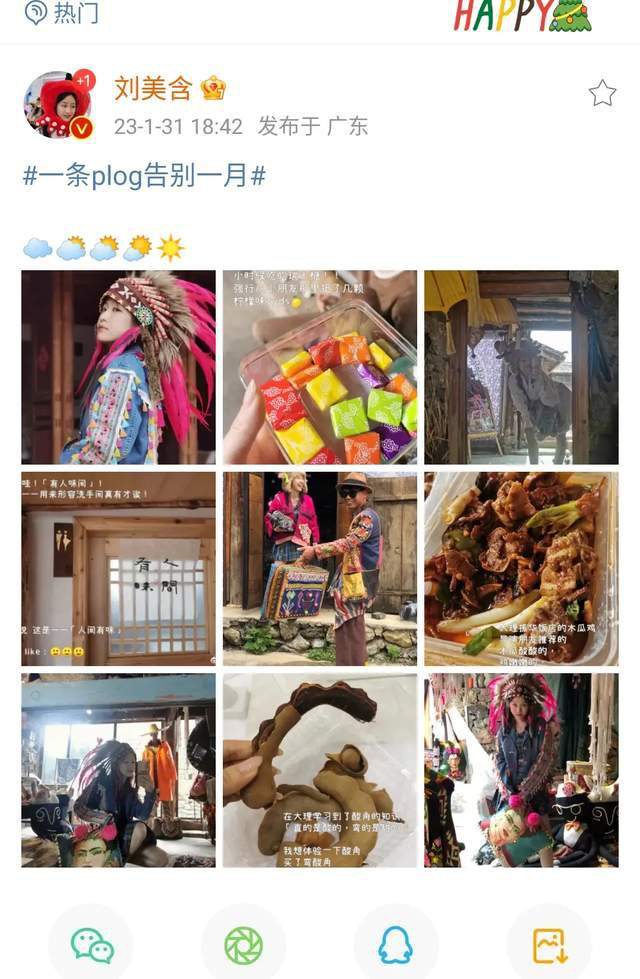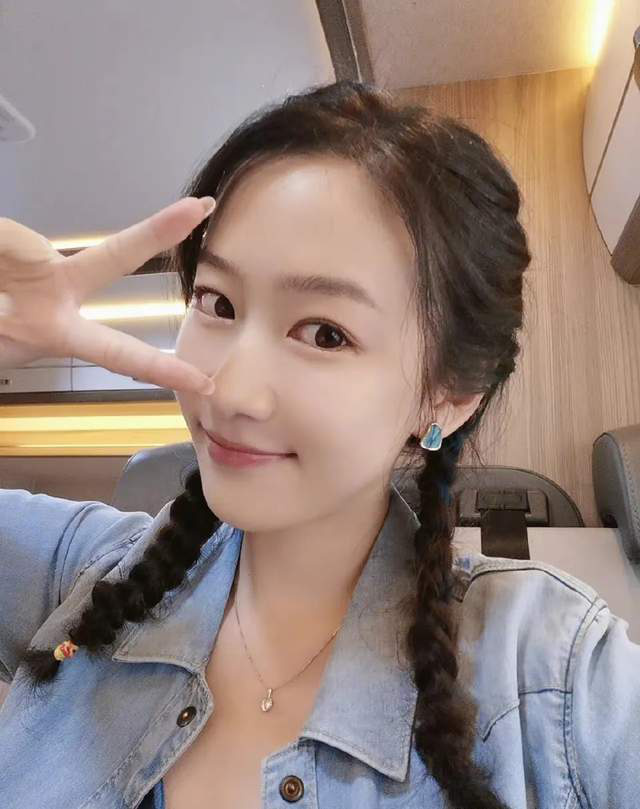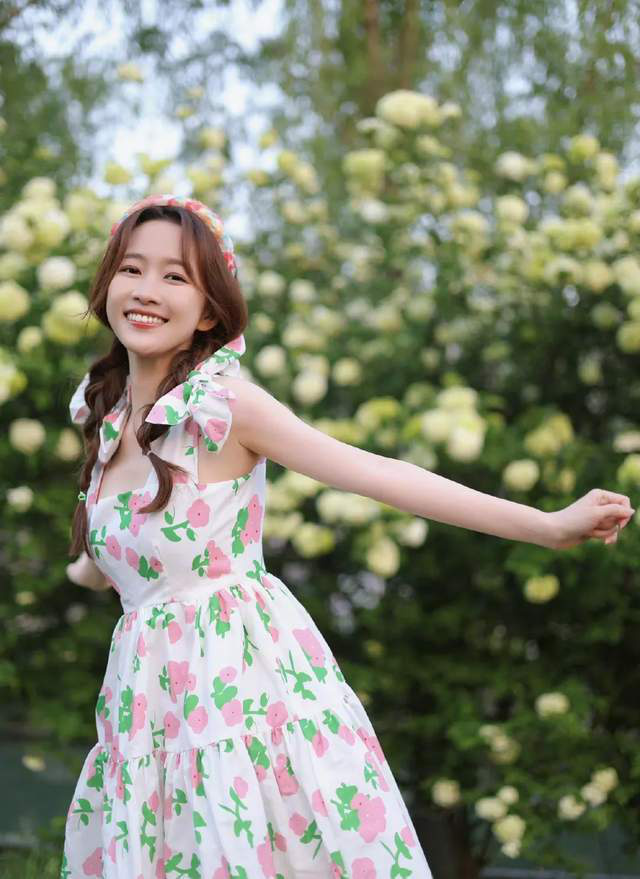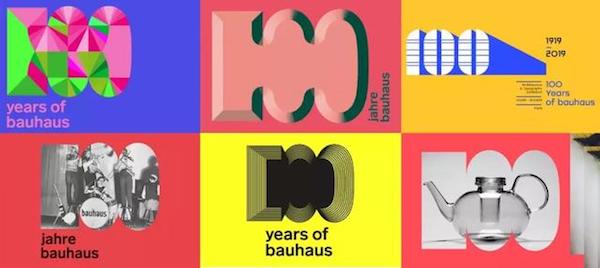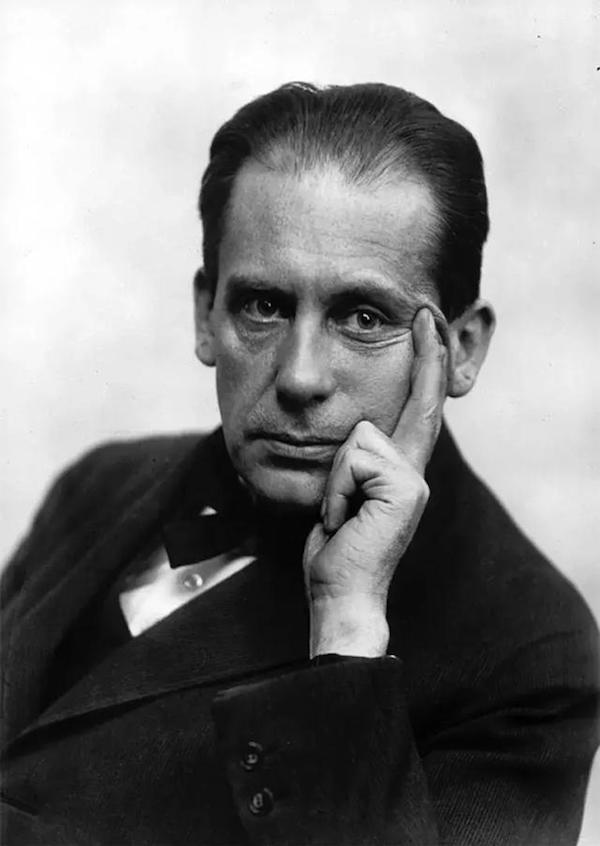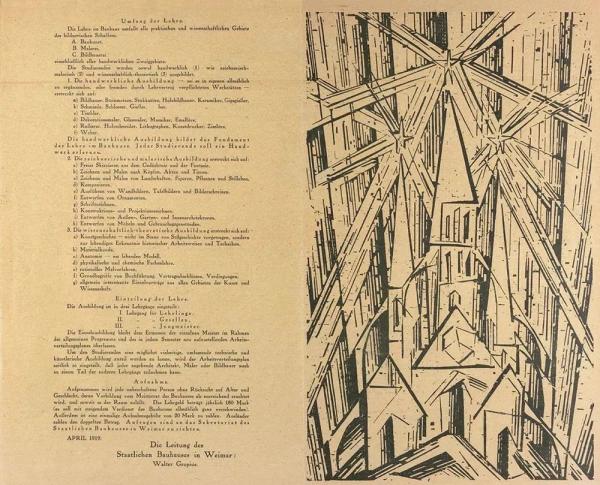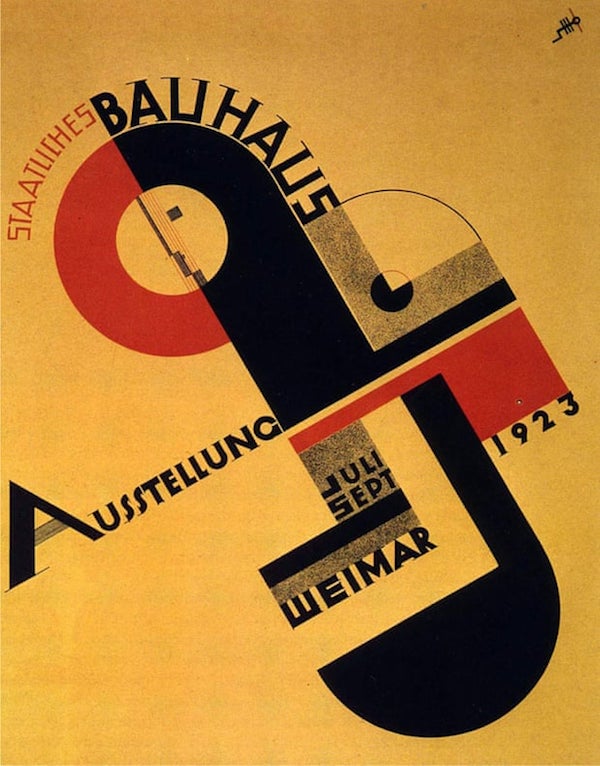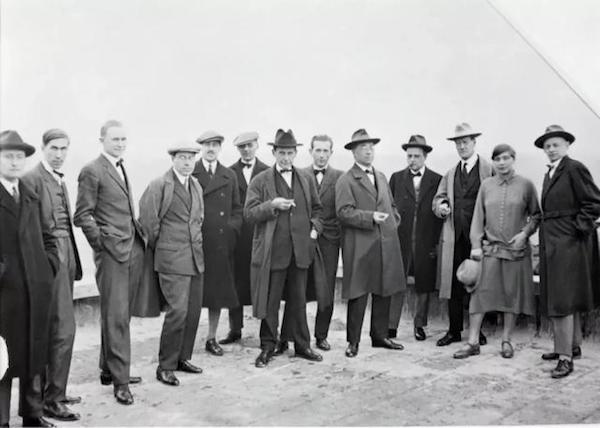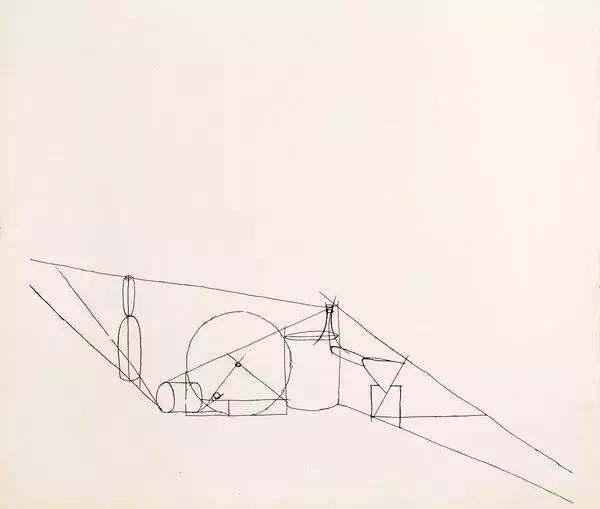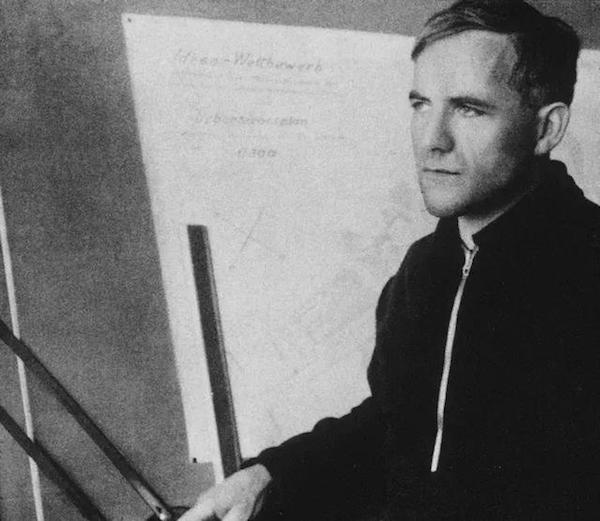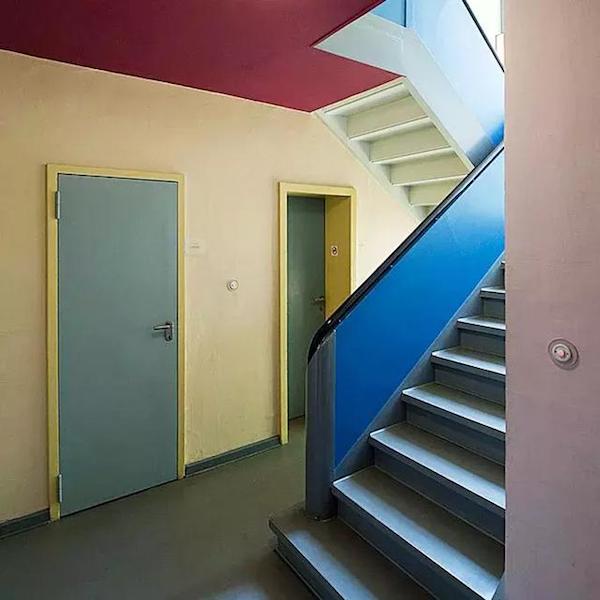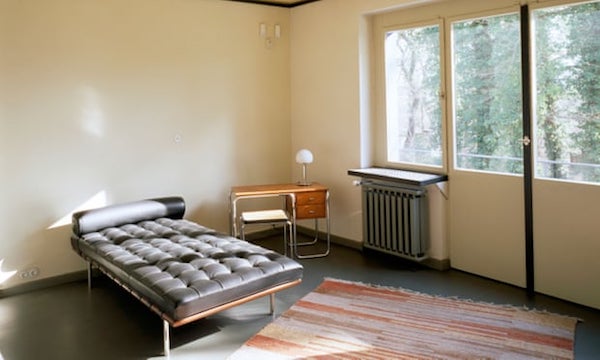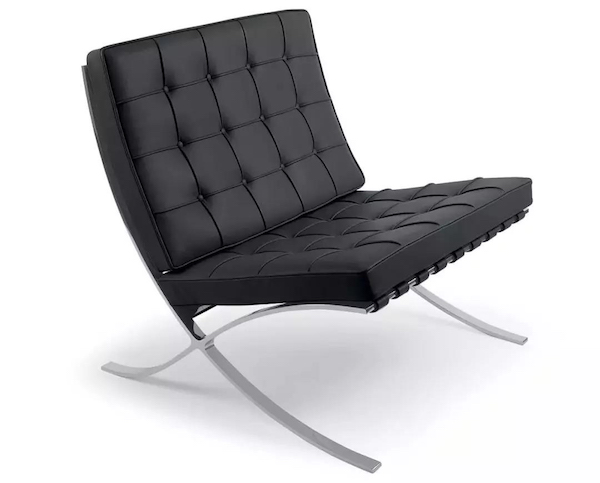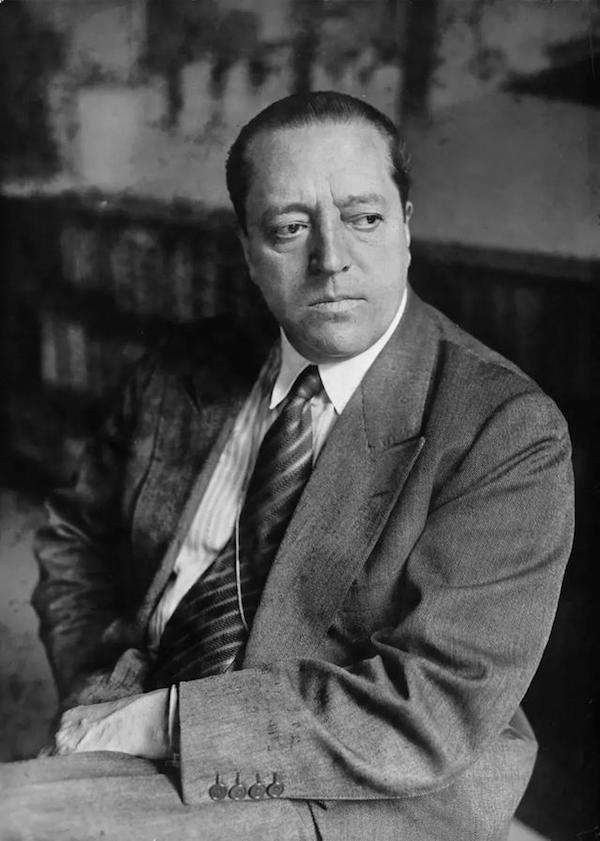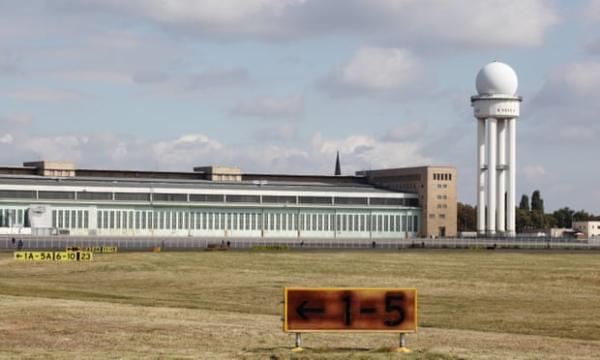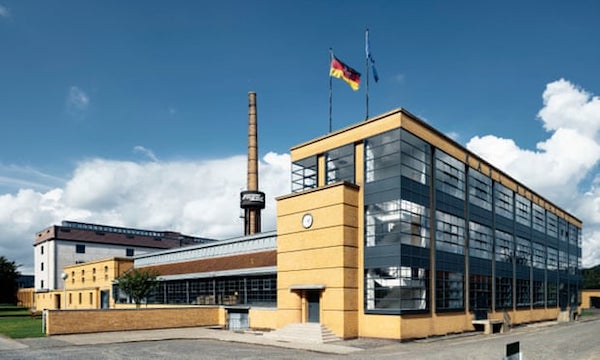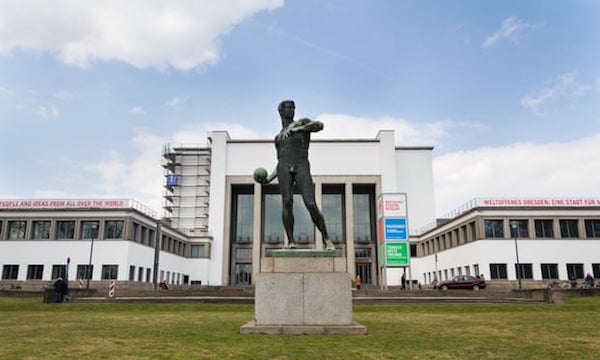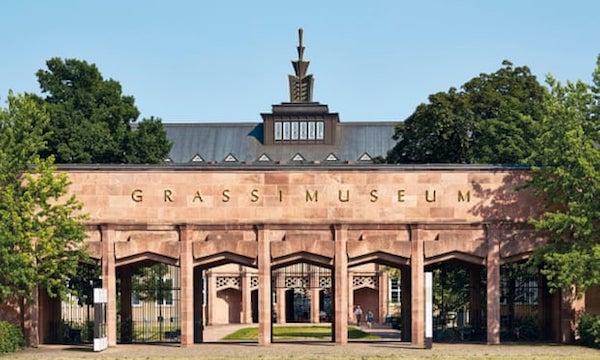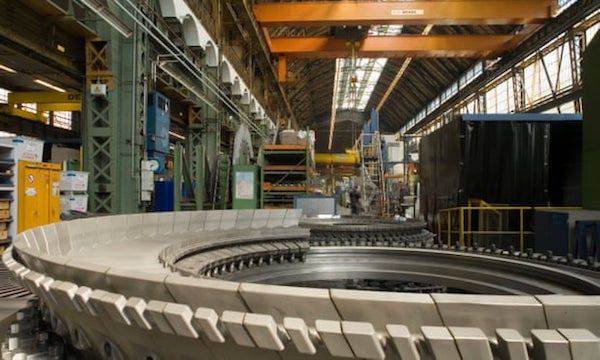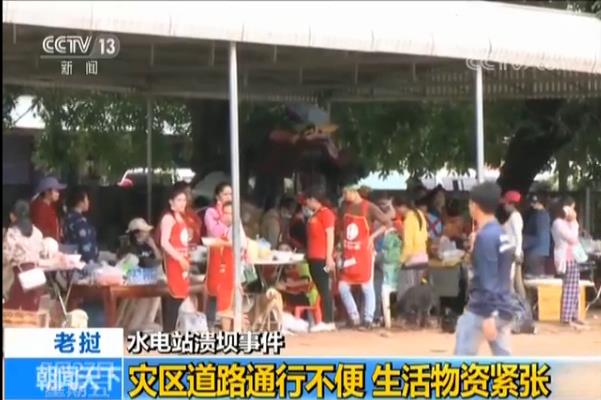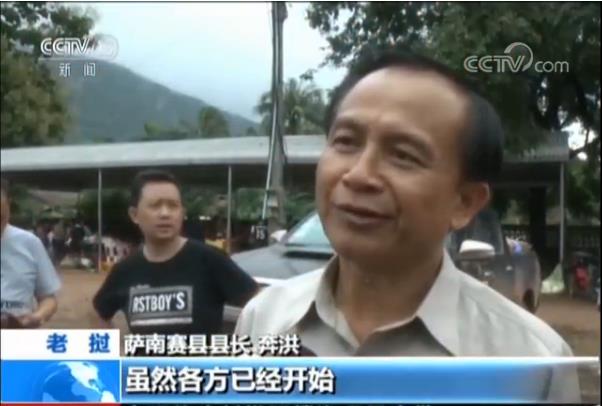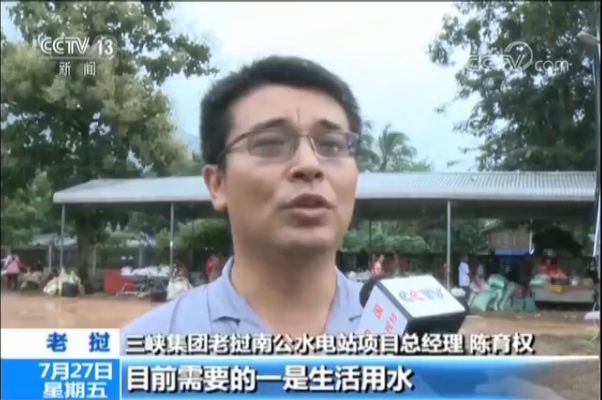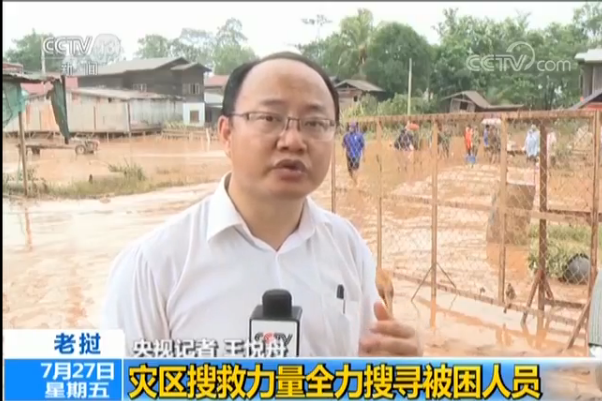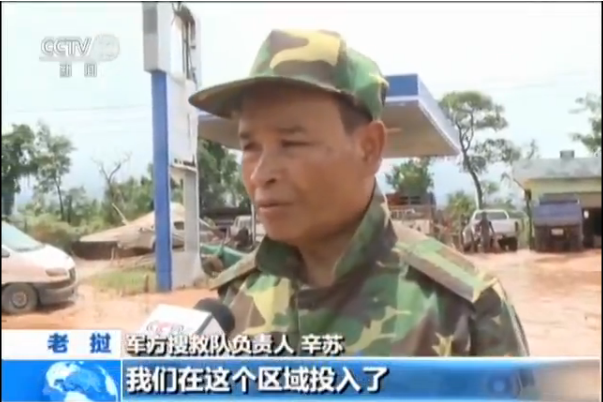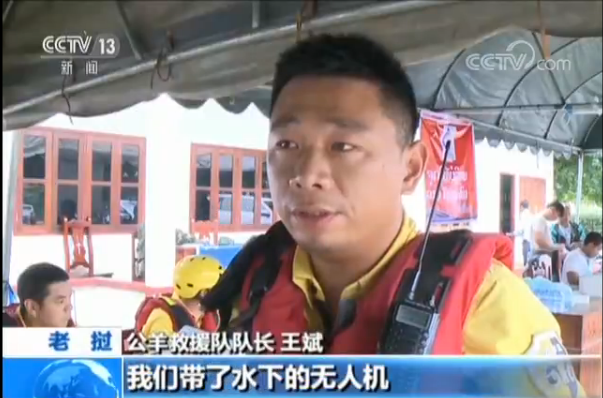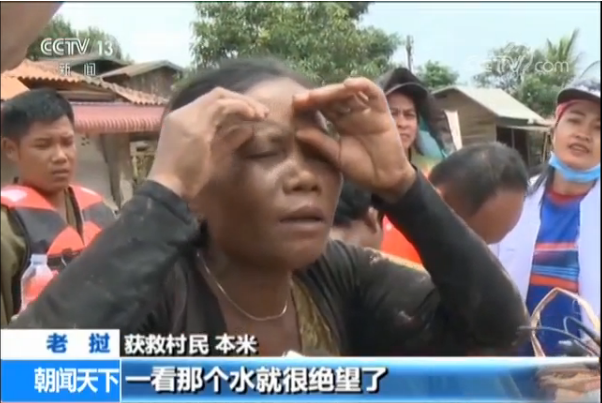The administrative offices of the Union, the Municipal People’s Government, the commissions, offices, departments and bureaus of the autonomous region, and major enterprises and institutions:
With the consent of the people’s government of the autonomous region, the "Fourteenth Five-Year Plan for the Integration of Culture and Tourism in Inner Mongolia Autonomous Region" is hereby issued to you, please conscientiously implement it according to the actual situation.
December 29, 2021
(This piece is publicly released)
Culture and Tourism in the Tenth Five-Year Plan of Inner Mongolia Autonomous Region
Integrated development planning
catalogue
foreword
Chapter I General Requirements
The first section guiding ideology
Section 2 Basic Principles
Section III Development Orientation
Section IV Development Goals
Chapter II Founding the Community Consciousness of the Chinese Nation
Section 1 Building a Spiritual Home Shared by All Ethnic Groups
Section 2 Strengthening the Study and Interpretation of Chinese Civilization
Section 3: Promoting Exchanges and Blending among Ethnic Groups
Section 4 Maintaining Ideological and Cultural Security
Chapter III Optimizing the Layout of Cultural and Tourism Development
Section 1 Promoting Coordinated Regional Development
Section 2 Promoting the Development of Industrial Agglomeration
Section III Promoting the Integration of Urban and Rural Development
Chapter IV Expanding the Supply of High-quality Cultural Tourism Integration Products
Section 1 Innovative Development of Cultural Tourism Products
Section 2 Enhancing the Cultural Connotation of Tourism Products
Section III Strengthening Rural Cultural Tourism and Promoting Rural Revitalization
Section 4: Doing Excellent Red Tourism and Inheriting Red Genes
The fifth section vigorously cultivates the new format of "Cultural Travel+"
Section VI Building Four Seasons Brand of Culture and Tourism
Chapter V Collaborative Promotion of Cultural and Tourism Public Services
Section 1 Optimizing the Tourism Traffic Service System
Section 2 Improving Tourism Information Consulting Services
Section 3: Perfecting the Tourism Identification and Interpretation System
The fourth quarter to promote the upgrading of tourist toilets.
Section 5 Expanding the Service Capacity of Public Cultural Facilities
Chapter VI Enriching Active Culture and Tourism Market
The first section stimulates the vitality of the main body of the cultural tourism market
Section 2 Optimizing the Cultural and Tourism Market Environment
Section III Overall Planning for Promoting Cultural and Tourism Consumption
The fourth quarter to improve the safety prevention and control ability of the cultural tourism industry
Section 5 Strengthening the Comprehensive Law Enforcement Supervision of the Cultural Market
Chapter VII Promoting Foreign Cultural Exchanges and Tourism Promotion
The first section to carry out multi-level regional exchanges and cooperation
Section 2 Innovative Culture and Tourism Publicity Methods
Section III Improving the level of exchange and cooperation mechanism with Russia and Mongolia
Section 4 Improving the International Communication Ability of Culture and Tourism
Chapter VIII Improving the scientific and technological support level of cultural and tourism development
Section 1: Developing Cultural Tourism Research and Scientific and Technological Innovation
Section 2 Promoting the Standardization of Culture and Tourism
Section III Accelerating the Construction of Cultural and Tourism Informatization
The fourth quarter to improve the technical level of culture and tourism equipment
Chapter IX Strengthening Policy Guarantee
Section 1 Promoting the Implementation of Laws and Regulations
Section II Strengthening Policy Support
Section III Strengthening the Construction of Talent Team
Chapter X Promoting the Planning Organization and Implementation
Section 1 Upholding the Party’s Overall Leadership
Section 2 Responsibility for Implementing Planning
Section III Strengthening Monitoring, Evaluation and Examination
This plan is formulated to implement the 14th Five-Year Plan for National Economic and Social Development of Inner Mongolia Autonomous Region and the Outline of Long-term Goals in 2035 and the 14th Five-Year Plan for Culture and Tourism Development of the Ministry of Culture and Tourism, accelerate the deep integration and high-quality development of culture and tourism in the whole region, and build a strong cultural and tourism area.
foreword
During the "Thirteenth Five-Year Plan" period, the region’s cultural and tourism system adhered to the guidance of the supreme leader Socialism with Chinese characteristics Thought in the new era, comprehensively implemented the major decision-making arrangements of the CPC Central Committee and the State Council and the work requirements of the Party Committee and government of the autonomous region, worked hard and made unremitting efforts, and made remarkable achievements in the development of cultural undertakings, cultural industries and tourism in the region. During the "Thirteenth Five-Year Plan" period, the objectives and tasks of cultural and tourism development were fully completed, and solid progress was made in the construction of well-known tourist destinations at home and abroad. The vitality of the development of cultural tourism has been significantly enhanced. The reforms of culture and tourism institutions in autonomous regions, league cities and counties (cities, districts) have all been put in place, and the integration of resources, industries, markets and activities has been further promoted. The "1+1 > 2" integration effect of culture and tourism has initially appeared. The supply and service capabilities of cultural and tourism products have been effectively improved, and a five-level network of public cultural service facilities covering urban and rural areas and benefiting the whole people has been basically completed. A number of characteristic cultural tourism brands such as Nadam for Inner Mongolia Tourism, Nadam for Inner Mongolia Ice and Snow, People’s Theater, Inner Mongolia Taste, Inner Mongolia Music, Inner Mongolia Gifts and 72-hour Self-driving Inner Mongolia have been created, and national global tourism demonstration zones, border tourism pilot zones and eco-tourism demonstration zones have been successfully established. Literary and artistic creation and production have become more prosperous, and the spirit of the important instructions of the Supreme Leader General Secretary on the development of Wulan Muqi has been conscientiously implemented, and the Regulations on Wulan Muqi in Inner Mongolia Autonomous Region has been promulgated, and the spirit of Wulan Muqi has been further passed down and carried forward.Original works with unified ideology, artistry and appreciation are constantly emerging. The dance drama "Little Sisters of Prairie Heroes" won the Wenhua Award, and the musical drama "My Wulan Muqi" was selected as the "Top Ten Plays" of the National Stage Art Boutique Project. 124 projects were funded by the National Art Foundation, and the regional art troupe performed a total of 137,500 times. The protection and inheritance of cultural heritage has been vigorously promoted. A total of 1.43 billion yuan of special funds have been invested in the protection of cultural relics. Seven ancient sites, including the site of Liaoshangjing, have been included in the national list of major sites. The creation of the Great Wall and the Yellow River National Cultural Parks has been solidly promoted. The four-level list system of intangible cultural heritage has basically taken shape. The Regulations on the Protection of Intangible Cultural Heritage in Inner Mongolia Autonomous Region has been promulgated and implemented, and more than 10,000 intangible exhibitions, performances and folk activities have been launched. The influence of Chinese culture has been expanding. A total of 111 delegations have been sent to more than 60 countries, including the United States, Britain and Germany, to perform the "Happy Spring Festival", to undertake large-scale international conferences, international summit forums and exhibitions, to tell the story of China and Inner Mongolia well, to spread the voice of China, and the influence of international tourism brands has been continuously improved.
The "14th Five-Year Plan" period is the first five years for China to build a well-off society in an all-round way and achieve the first century-long struggle goal, and to start a new journey of building a socialist modern country in an all-round way and March towards the second century-long struggle goal. It is also a crucial period for the construction of a strong socialist cultural country, and for Inner Mongolia to take a new path of high-quality development with ecological priority and green development as the guide and achieve new and greater development. The opportunities and challenges for cultural and tourism development in the whole region coexist. With the in-depth implementation of a series of major national strategies, our region has multiple superimposed development opportunities and favorable conditions for better promoting the deep integration of culture and tourism and high-quality development. In particular, culture and tourism are not only important contents to stimulate domestic demand, prosper the market, expand employment and smooth the domestic circulation, but also an important bridge to promote the domestic and international double circulation, creating a huge space for our region to promote the transformation of ecological, cultural and location advantages into cultural and tourism development advantages. Accelerate the transformation of culture and tourism development mode, promote upgrading, improving quality and efficiency, better realize cultural empowerment and tourism-driven, and continuously meet the people’s growing needs for a better life. The integration of culture and tourism in Inner Mongolia has broad prospects. At the same time, we should also see that the contradiction between the unbalanced and insufficient development of cultural undertakings, cultural industries and tourism in the whole region is still outstanding, and the integration of culture and tourism is not deep enough; The supply and demand of culture and tourism products do not match, and the supply system of high-quality culture and tourism products has not yet formed; The public culture and tourism service system is not perfect, and the bottleneck of infrastructure is prominent;The task of protecting cultural heritage is arduous, and the utilization of cultural heritage needs to be strengthened; There are still weaknesses in market governance, and the business environment needs to be improved; Cultural and tourism promotion and innovation are not enough, and brand influence needs to be improved. All regions and relevant departments should base themselves on the new stage of development, implement new development concepts, serve and integrate into the new development pattern, stimulate new kinetic energy through innovation and development, stimulate new vitality through deepening reform, and strive to create a new situation in cultural and tourism development.
Chapter I General Requirements
The first section guiding ideology
Hold high the great banner of Socialism with Chinese characteristics, adhere to the guidance of the Supreme Leader’s Socialism with Chinese characteristics Thought in the new era, thoroughly implement the spirit of the 19th National Congress of the Communist Party of China and the Second, Third, Fourth, Fifth and Sixth Plenary Sessions of the 19th Congress, fully implement the spirit of the important instructions given by the General Secretary of the Supreme Leader to the important speech in Inner Mongolia, conscientiously fulfill the mission of raising the banner, gathering people’s hearts, educating new people, promoting culture and displaying image, and deepen the integrated development of culture and tourism. Guided by the core values of socialism, with the main line of building a sense of community of the Chinese nation, with the focus on meeting the people’s high-quality culture and tourism needs, we will comprehensively promote the structural reform of the tourism supply side around the cultural and tourism industries, improve the public culture and tourism service system, increase the supply of high-quality cultural and tourism products, and enhance the influence of cultural tourism brands in Inner Mongolia. Efforts will be made to build cultural tourism into an advantageous industry in the region, a pillar industry in the service industry and a comprehensive happiness industry, and to build Inner Mongolia into a strong cultural and tourism area and a well-known cultural experience and ecological leisure tourism destination at home and abroad.
Section 2 Basic Principles
-stick to the right direction. Adhere to the Party’s overall leadership over culture and tourism, firmly grasp the direction of advanced socialist culture, take the socialist core values as the guide, take the sense of community of the Chinese nation as the main line, consolidate the foundation, cultivate the yuan, keep the integrity and innovate, inherit and carry forward China’s excellent traditional culture and revolutionary culture, vigorously develop advanced socialist culture, persist in putting social benefits first, and realize the unity of social and economic benefits.
-persist in taking the people as the center. To meet the people’s growing needs for a better life as the fundamental purpose, adhere to the people’s supremacy, closely rely on the people, continuously benefit the people, firmly root in the people, comprehensively enhance the public cultural service capacity, vigorously promote tourism for the people, give play to the driving role of tourism, and continuously improve the people’s sense of cultural and tourism acquisition and happiness.
-Adhere to the new development concept. Highlight the core position of innovation and comprehensively promote innovation in modes, formats, products, services and science and technology. Coordinate and promote the differentiated and coordinated development of tourism in the eastern, central and western regions of the autonomous region, and increase the supply of high-quality culture and tourism products. Firmly establish the concept of "Lucid waters and lush mountains are invaluable assets" and unswervingly take the road of ecological priority and green development. Comprehensively deepen reform and open wider to the outside world, and strive to promote the high-quality development of culture and tourism in the whole region.
-Adhere to integrated development. We will carry out the concept of "molding tourism with literature, displaying literature with tourism, and integrating with each other when appropriate", further promote cultural soul-building, implement cultural empowerment, improve the system and mechanism for the integrated development of culture and tourism, promote the deep integration of culture and tourism in all fields, in all directions and in the whole chain, and strive to build a development pattern of resource sharing, complementary advantages and synergy.
Section III Development Orientation
Demonstration area of Chinese excellent cultural protection and inheritance. Vigorously implement the inheritance and development project of Chinese excellent traditional culture, establish and improve the database of cultural resources, do a good job in systematic protection and inheritance of cultural heritage, launch a number of outstanding literary and artistic works, build an excellent traditional cultural industry promotion system, and inherit and carry forward Chinese excellent traditional culture.
Protect and inherit the Yellow River culture and carry forward the pioneering area. Implement the systematic protection project of the Yellow River cultural heritage, strengthen the digital protection, inheritance and promotion of the Yellow River cultural heritage, and carry out the creation, performing arts and exhibitions of the Yellow River literary and artistic works. Construction of the Yellow River cultural heritage corridor, the creation of a number of cultural and ecological protection areas, boutique tourist attractions, tourist resorts and tourist leisure cities, blocks, etc., to create the Yellow River "several" bend cultural tourism belt.
Eco-cultural tourism destination in northern China. Establish and improve the value realization mechanism of eco-products, give full play to the ecological advantages of grasslands, deserts, rivers and lakes, wetlands and forests, vigorously develop eco-tourism, cultural tourism, leisure tourism and recreational tourism, build a number of national eco-tourism destinations and leisure cities, launch a number of eco-tourism boutique routes, and build a new national eco-tourism benchmark.
China opens a model area for cultural and tourism exchanges to the north. Actively integrate into the joint construction of the "Belt and Road", actively participate in the construction of China-Mongolia-Russia economic corridor, continue to promote the construction of border tourism pilot zones and cross-border tourism cooperation zones, and build an international tourism brand of "Wanli Tea Ceremony" as a link to promote the development of cross-border tourism in China, Mongolia and Russia. Efforts will be made to create and export a number of fine works of art that reflect the excellent Chinese culture, and innovate in international cultural and artistic exchanges and cooperation.
Section IV Development Goals
By 2025, great progress has been made in the construction of a strong cultural and tourism area, the well-known cultural experience and the effect of eco-leisure tourism destination at home and abroad have been highlighted, the system and mechanism for promoting the high-quality development of cultural undertakings, cultural industries and tourism have been improved, the governance efficiency has been significantly improved, the people’s spiritual and cultural life has been enriched day by day, the influence of China’s excellent culture has been further enhanced, the cohesion of the Chinese nation has been further enhanced, the role of culture in casting souls, empowering culture, serving the people and tourism has been fully highlighted, and cultural undertakings, cultural industries and tourism have become
The sense of community of the Chinese nation has been firmly established. In the new era, cultural and artistic creation has flourished in an all-round way, and a number of outstanding stage art works and art works that eulogize the new era, reflect new achievements and represent the cultural image of the autonomous region have been launched. The system of inheritance and utilization of cultural heritage protection has been continuously improved. The completion rate of the "four haves" work of key cultural relics protection units in the whole region has reached 100%, and more than one national cultural and ecological protection zone has been built. The public cultural service system is more perfect. There are more than 1,700 cultural facilities (public libraries, cultural centers, art galleries, museums, art performance venues) in the region, and cultural facilities serve more than 100 million people annually. We will promote cultural performances, cultural creation and intangible cultural heritage into scenic spots, promote national cultural parks, archaeological sites parks and key cultural venues to become tourist destinations, strengthen cultural empowerment in tourism public services, promote exchanges and exchanges among ethnic groups, and promote and enhance social civilization with remarkable results.
The cultural industry system is more sound. The structural layout of cultural industries has been continuously optimized, the added value of culture and related industries has further increased as a proportion of GDP, and the supporting and driving role of cultural industries in national economic growth has been fully exerted. Four national cultural and tourism consumption pilot and demonstration cities, four national night cultural and tourism consumption gathering areas and one national cultural industry demonstration park have been built.
The tourism system is more perfect. Mass tourism has developed in depth, and cross-border tourism has grown steadily. There are 60 tourist attractions above 4A level and 5 tourist resorts above autonomous region level, and efforts will be made to create three national 5A-level tourist attractions and one national tourist resort. By 2025, the total number of tourists will be 220 million, and the total tourism revenue will be 450 billion yuan.
The cultural and tourism market system is becoming more and more complete. The cultural and tourism market is prosperous and orderly, the role of the market in the allocation of cultural and tourism resources has been better played, and the market supervision ability has been continuously improved.
The system of foreign cultural exchange and tourism promotion is more mature. We will continue to promote cultural exchanges and cooperation between China, Russia and Mongolia, continuously enhance the reputation and influence of brands such as "Wanli Tea Ceremony" and "International Yellow River Cultural Tourism", increase policy support for foreign cooperation and exchange, promote institutional innovation, and build border tourist destinations.
Looking forward to 2035, a strong cultural and tourism area will be built in an all-round way, and a well-known cultural experience and ecological leisure tourism destination at home and abroad will be built. Cultural soft power will be significantly enhanced, culture and tourism will be deeply integrated, and the overall strength and competitiveness of cultural industries and tourism will be greatly enhanced. Excellent literary and artistic works, cultural products and high-quality tourism products will fully meet the needs of the people for a better life. Cultural and tourism development will provide a strong guarantee for the all-round development of people and the common prosperity of all people.
Chapter II Founding the Community Consciousness of the Chinese Nation
The sense of community of the Chinese nation is the emotional bond of national identity and ethnic blending, the ideological cornerstone of the reunification of the motherland and national unity, and the source of strength for the enduring and sustainable development of the Chinese nation. To strengthen the great unity of the Chinese nation, the long-term and fundamental thing is to strengthen cultural identity, build a spiritual home shared by all ethnic groups, and actively cultivate the sense of community of the Chinese nation. In the development of culture and tourism, we must adhere to the principle of building a strong sense of the Chinese nation’s community, give full play to our own advantages, make good use of various ways such as literary and artistic creation and performance, cultural heritage protection and inheritance, and cultural and tourism activities, and tell the stories of exchanges and exchanges among all ethnic groups, Chinese cultural stories and national unity in an all-round and three-dimensional way, so that the "three inseparable" and "five identities" can be integrated into the blood, and all ethnic groups can be closely held together like pomegranate seeds to unite and build a beautiful Inner Mongolia.
Section 1 Building a Spiritual Home Shared by All Ethnic Groups
Protect and revitalize China’s excellent traditional culture. Establish and highlight the Chinese cultural symbols and images shared by all ethnic groups, strengthen the systematic protection of China’s excellent traditional culture, revolutionary culture and intangible cultural heritage, attach importance to the protection and inheritance of minority cultures, and persist in creative transformation and innovative development. Vigorously publicize that Chinese culture is the epitome of all ethnic cultures, and minority cultures are an organic part of Chinese culture, and build a spiritual home shared by all ethnic groups. Fully integrate Chinese excellent traditional culture, revolutionary culture and advanced socialist culture into the design of tourist routes, literary and artistic creation, exhibition and presentation experience.
Strengthen the protection and utilization of revolutionary cultural relics. We will comprehensively improve the level of protection, management, research, interpretation and utilization of revolutionary cultural relics in the new era, give play to the inheritance function of revolutionary cultural relics education, and promote the masses to enhance their ideals and beliefs and unite their spiritual strength. Strengthen revolutionary tradition education and patriotism education, build a number of patriotic education bases, create a number of classic red tourism scenic spots, launch a number of excellent routes for study tours and experience tours, and establish a red cultural tourism brand of Inner Mongolia’s revolutionary history.
Promote the creation and dissemination of fine arts. Combined with the important time nodes such as the centenary of the founding of the Communist Party of China (CPC) and the 75th anniversary of the founding of People’s Republic of China (PRC), we will create a number of fine works of art that spread positive energy and show the spirit of the times around the history of Party history, the history of New China, the history of reform and opening up, and the history of socialist development. Implement the quality improvement project of literary and artistic works, and cast a solid sense of the Chinese nation community with literary and artistic creation. Strengthen the dissemination of literary and artistic masterpieces, do a good job in the inheritance and protection of outstanding Chinese arts, and focus on displaying the latest creative achievements.
Improve the level of inheritance of non-legacy protection. Carry out the investigation of non-legacy in the whole region and establish non-legacy files and databases. Dig deep into the unique spiritual value and cultural connotation of the Chinese nation, promote the revitalization of traditional crafts, hold intangible exhibitions, support the construction of intangible cultural heritage museums, intangible employment workshops, intangible characteristic towns, etc., promote intangible cultural heritage into scenic spots, and let intangible cultural heritage play an active role in spreading Chinese excellent traditional culture and enhancing tourism cultural experience.
Section 2 Strengthening the Study and Interpretation of Chinese Civilization
Build the Great Wall National Cultural Park. Comprehensively promote the protection and utilization of the Great Wall resources in Inner Mongolia, give full play to the unique role of the Great Wall in inheriting and carrying forward China’s excellent traditional culture, tap the cultural value, landscape value and spiritual connotation of the Great Wall, promote the combination of the Great Wall spirit and the elements of the times, make overall efforts to promote the protection of the Great Wall, theme display, cultural tourism integration and development and utilization, and build the Great Wall National Cultural Park (Inner Mongolia section), so as to make it a bright business card for carrying forward the national spirit, inheriting Chinese civilization, publicizing the image of China and showing cultural confidence in the new era.
Construction of the Yellow River National Cultural Park. Promote the inheritance and promotion of the Yellow River culture with high quality, deeply explore the value and spiritual connotation of the Yellow River culture in Inner Mongolia, actively explore new paths for the protection, inheritance and utilization of the Yellow River cultural resources in the new era, and vigorously promote the excellent Chinese traditional culture, revolutionary culture and advanced socialist culture in the Yellow River Basin in Inner Mongolia. In accordance with the overall plan for the construction of the Yellow River National Cultural Park, we will build a number of landmark projects for the protection, inheritance and promotion of the Yellow River culture, create a number of Chinese cultural signs and image symbols, expand the publicity and promotion of the Yellow River culture, tell the story of the Yellow River in Inner Mongolia and inherit the Yellow River culture with Inner Mongolia characteristics.
Improve the level of archaeological utilization of cultural relics. Strengthen the archaeological and historical research of cultural relics, make the cultural relics collected in museums, the heritage displayed on the vast land and the characters written in ancient books come alive, and enrich the historical and cultural nourishment of the whole society. Focus on the origin of early civilizations in the Yellow River and the West Liaohe River Basin, the Great Wall blockade and the governance system in northern Xinjiang, and carry out research on the exchanges and exchanges between ethnic groups in the northern frontier. Promote the research on archaeological excavation of early settlement sites in Inner Mongolia and Hetao area of "Archaeology China" in the "Chinese Civilization Exploration Project". Strengthen the protection of key cultural relics and the exhibition and dissemination of archaeological and historical research results of cultural relics. Guide the broad masses, especially young people, to understand the historical context of the origin and development of Chinese civilization, understand the great contribution of Inner Mongolia in the formation and development of Chinese civilization, and constantly enhance the cohesion and pride of the Chinese nation.
Promote the reform and development of museums. Implement the development plan of excellent museums, and support the characteristic development of museums at autonomous region level and key league level. Implement the promotion plan of small and medium-sized museums, strengthen mechanism innovation and revitalize the resources of grass-roots museums. Implement the collection information management project, the collection cultural relics restoration project, the preventive protection project and the collection digitization project to comprehensively enhance the protection ability. Vigorously develop smart museums and gradually realize smart services, smart protection and smart management. Take Inner Mongolia Museum as the leader, deepen the cooperation between museums and universities and research institutes, and promote the construction of research-oriented museums. With the theme of Wanli Tea Ceremony, Great Wall Culture and Yellow River Culture, we will integrate the collection resources of museums in the whole region, and hold exhibitions of fine cultural relics at home and abroad to further publicize and carry forward Chinese excellent traditional culture. Implement the "Museum Plus" strategy to promote the cross-border integration of museums with tourism, education, science and technology.
Strengthen the research and utilization of ancient books protection. Strengthen the collection, collation and protection of ancient Chinese books, excavate and carry forward the ideological connotation of national unity and progress contained in them, and encourage people of all ethnic groups to work together for common prosperity and development. Coordinate and promote the work of general survey and registration, protection and restoration, and digital construction of ancient Chinese literature. Strengthen the application of ancient books in public cultural services, and rely on libraries and museums at all levels to display and utilize precious ancient books. Improve the cultural resources sharing project, maximize the dissemination and circulation function of literature resources, and provide readers with convenient and timely literature information services. Strengthen the cultivation of talents for the protection, inheritance and utilization of ancient books.
Section 3: Promoting Exchanges and Blending among Ethnic Groups
Promote the normalization of mass cultural activities. Innovatively implement the project of benefiting the people by culture, establish and improve the management and evaluation system of public cultural service facilities, and improve the efficiency of public cultural services. We will increase the intensity of sending literature and art to the countryside, expand the coverage and influence of performances that benefit the people, such as opera entering the countryside, and let Chinese excellent traditional culture infiltrate people’s hearts. We will hold demonstration and leading mass cultural activities such as the Inner Mongolia Stars Award, the regional farmers’ and herdsmen’s cultural performances, the square dance competition and the chorus competition, so as to promote and guide the literary and artistic creation, team training, brand building and activities of the people in rural pastoral areas.
Focus on creating cultural and tourism festivals. Dig deep into the excellent cultural elements and traditional folk culture of all ethnic groups in Inner Mongolia, and promote the establishment of special cultural tourism festivals in combination with modern cultural consumption and tourism and leisure needs. Innovative holding of the Yellow River "Ji" bend eco-cultural tourism season, Inner Mongolia tourism Nadam, Inner Mongolia ice and snow Nadam, Inner Mongolia clothing and apparel art festival, fine performing arts and cultural creation exhibition, cultural tourism festival, music festival, ice and snow festival, horse racing festival and Wulan Muqi art festival and other guiding and demonstration festivals. Every year, professional competitions of music, dance and skits in the whole region are held in turn. Innovatively carry out traditional folk cultural activities around traditional festivals such as Spring Festival, Lantern Festival, Dragon Boat Festival and Mid-Autumn Festival.
Strengthen the popularization of national art. Take root in the life of the times, follow the characteristics of aesthetic education, regard universal art popularization as an important content of public cultural services, and promote the establishment of art popularization weeks and art festivals in various league cities and counties (cities, districts) to enhance social influence. Adhere to the basic cultural and artistic needs of the masses, hold public welfare cultural and artistic lectures, exhibitions, exhibitions and training activities all the year round, promote the popularization of artistic knowledge, appreciation, skills and activities of the whole people, and build cultural centers (stations) into lifelong aesthetic education schools for urban and rural residents.
Improve the supply capacity of public cultural services. We will fully implement the policy of free opening of public libraries, cultural centers (stations), art galleries, museums and memorial halls to ensure high-quality basic public cultural services in public cultural venues. Improve the security mechanism, do a good job in delay, wrong time and mobile services. Adhere to the social benefits in the first place, and promote qualified public cultural institutions to revitalize cultural resources and develop cultural and creative products. Encourage public cultural institutions and social forces to cooperate in depth around industrial chains such as cultural authorization, creative design, production and processing, and marketing management. Improve the service mechanism of "order-based", "menu-based" and "reservation-based", and accelerate the realization of online distribution of cultural resources, online reservation of venues and online reservation of activities.
Section 4 Maintaining Ideological and Cultural Security
Strengthen the content management of cultural works. Adhere to the "five one projects" of spiritual civilization construction as the guide, and improve the spiritual height, cultural connotation and artistic value of Inner Mongolia culture and art in the new era as a whole. Implement the responsibility system for ideological work, grasp the correct orientation, and strengthen the content control of literary and artistic works and cultural products. Organize the examination and control of festivals, public services, non-legacy exhibitions, tourism performances, tourism publicity, and cultural and tourism exhibitions. Establish and improve the cultural security risk assessment and supervision mechanism, formulate a cultural security risk list, and effectively resolve the risk challenges that endanger cultural security.
Improve the quality of cultural and tourism exhibitions. Give full play to the educational functions of museums and exhibition halls in history and culture, national unity and revolutionary tradition, excavate and sort out the history of exchanges and exchanges among ethnic groups in Inner Mongolia, optimize various theme exhibitions and publicity activities, and guide the people of all ethnic groups to deeply understand that the Chinese nation is a cultural community and a community of destiny. Innovate exhibition display methods, strengthen interactive immersive experience design, explore technological innovations and applications such as thematic display themes, reuse of characteristic spaces, and high-tech interactive facilities, and constantly launch original fine exhibitions to comprehensively improve the exhibition level of various museums and exhibition halls.
Optimize the quality of cultural and tourism explanation services. Comprehensively improve the service level of cultural and art venues and tourist attractions. Strengthen the cultural literacy and service skills training of tour guides in travel agencies. Organize the collection of excellent tour guide words and commentaries, edit the tour guide words of "Beautiful Inner Mongolia Wonderful Tour Guide Lecture", hold regular skill competitions for tour guides and interpreters in the whole region, and train a group of gold medal tour guides and interpreters. We will comprehensively strengthen the construction of the red narrator team, hold the Inner Mongolia Red Story Interpreter Competition regularly, and continue to carry out the "Five Good Interpreters" selection activities for red tourism.


Chapter III Optimizing the Layout of Cultural and Tourism Development
Guided by the development of global tourism, we will promote the differentiated and coordinated development of tourism in the eastern, central and western regions, and establish a new pattern of cultural and tourism integration development with regional coordination, industrial agglomeration and urban-rural integration. By optimizing and integrating cultural and tourism resources, we will build a large scenic spot across the alliance cities, lay out a "golden line" of tourism across regions, take ecology as the background, take culture as the characteristics, and take tourism as the industrial support, and build a spatial layout of "belt-circle-line-city-suburb-park" culture and tourism integration development.
Section 1 Promoting Coordinated Regional Development
Eastern region. Including Hulunbeier City, Xing ‘an League, Tongliao City, Chifeng City and Xilin Gol League. Give full play to the green ecological advantages of prairie, big forest, big river lake and big wetland and the regional characteristics of ice, snow, hot springs, ports, historical sites and folk customs, focus on promoting the upgrading of eco-tourism, border tourism and ice and snow tourism, vigorously develop cultural heritage tourism, rural tourism, red tourism and research tourism, and strive to build Hulunbeier into a first-class grassland forest ecological and border tourism destination in China, and help Inner Mongolia build an eco-cultural tourism destination in northern China. Strengthen cooperation with Northeast China and Beijing-Tianjin-Hebei region, dig deep into historical, folk customs and regional cultural connotations, comprehensively promote cultural relics archaeology, non-genetic inheritance, literary creation, etc., improve the quality and level of cultural services, accelerate the promotion of creative design of handicrafts and derivative development, intangible production protection, grassland nomadic culture, cultural leisure and other characteristic cultures and tourism industries to improve quality and efficiency, give play to the functions of Chifeng City and Tongliao City as regional central cities, and link Hulunbeier City, Xing ‘an League and Xilin Gol League to build the eastern region.
The central region. Including Hohhot, Baotou, Ordos and Wulanchabu. Give full play to the characteristics of grassland, forest, mountain, desert, Yellow River and Great Wall, deepen tourism cooperation with Hubao-Hubei urban agglomeration as the core, focus on developing cultural heritage tourism, grassland tourism, desert tourism, Yellow River tourism, Great Wall tourism and red tourism, innovate and develop new tourism formats such as recreational tourism, sports tourism, rural tourism and leisure vacation, and strive to build Hohhot into a modern leisure and exhibition tourism center and Ordos into a cultural experience. We will comprehensively strengthen the integration of public culture and tourism services in Hubei, Hubei and Hubei, and fully promote modern cultural industries such as digital content, creative design, network culture, fine performing arts, cultural and creative products, and traditional crafts, so as to build the core area of cultural industry development, cultural technology and cultural and creative highland in Inner Mongolia.
The western region. Including Bayannaoer City, Wuhai City and Alxa League. Give full play to the unique advantages of unique ecological environment, natural wonders, history, culture and ethnic customs, continuously strengthen the construction of tourism infrastructure and public service facilities, give priority to the development of characteristic eco-tourism, desert leisure tourism and self-driving cross-country tourism, and build Alashan League into a well-known tourist area with western customs in China. We will comprehensively promote the integrated development of culture and tourism, highlight cultural and ecological characteristics, vigorously cultivate cultural formats such as film and television creation, fine performing arts, cultural creativity, cultural relics and archaeology, enhance the supply of cultural and tourism products, and focus on building a number of tourist attractions and tourist routes with the theme of desert leisure, Yellow River customs, folk experience, eco-tourism, cultural heritage and rural tourism. We will comprehensively link the "Hubao-E-Wu" area, work together to create the "Ji"-shaped cultural tourism belt of the Yellow River in Inner Mongolia, and jointly build a cultural circle with regional characteristics in the west.


Section 2 Promoting the Development of Industrial Agglomeration
Integrate and create four boutique cultural tourism belts. Relying on the characteristic tourist scenic road, taking the tourist center city as the fulcrum, integrating the core culture and tourism resources in the eastern, central and western regions, we will focus on building the Mongolian grassland forest cultural tourism belt (Tongliao City-Xing ‘an League-Hulunbeier City), the original customs tourism belt around Beijing, Tianjin and Hebei (Wulanchabu City-Xilin Gol League-Chifeng City), the zigzag cultural tourism belt of the Yellow River, and the western desert leisure cultural tourism belt (Bayannaoer City-Wuhai City)
Aggregation forms four eco-cultural tourism circles. According to the integrity of natural and cultural ecological units, the differences in resource endowments and industrial complementarities in each Union city, relying on central cities and tourist towns, supporting tourist attractions and cultural heritage sites, and taking the transportation network as a link, we will integrate cultural and tourism resources across the Union cities, and jointly build a cross-regional cultural tourism product system, and build an eco-cultural tourism circle of Hohhot-Baotou-Hubei-Urumqi, an eco-cultural tourism circle of Urumqi-Ahai-Manchu, and an eco-cultural tourism circle of Urumqi-Zhahuo-Urumqi.
Promote the construction of a number of tourism industry clusters. On the basis of the construction of "four belts and four circles" in the autonomous region, according to the concentration of resources and cultural relevance, with tourist towns as the core and tourist scenic spots (spots), cultural heritage sites, grassland natural parks, rural tourism key towns and villages as the nodes and supports, we will improve the tourism public service system, cultivate new formats and new products, and build a number of cultural and tourism industry clusters across the alliance cities and counties (cities, districts). Establish cooperation mechanisms in product research and development, marketing promotion, public services, market supervision, etc., to realize resource sharing, complementary advantages, mutual exchange of tourists, transportation interconnection, line co-construction and brand promotion, and help the integrated development of regional culture and tourism.


Section III Promoting the Integration of Urban and Rural Development
Cultivate four national tourism and leisure cities. According to the overall layout of the differentiated and coordinated development of tourism in the eastern, central and western regions of the autonomous region, efforts will be made to cultivate four major tourist and leisure cities: Hohhot, Ordos, Hulunbeier and Alashan League. Promote the construction of urban parks, theme parks, science and technology museums, exhibition halls, zoos and botanical gardens with regional cultural characteristics, set up urban landmark areas and buildings, create distinctive urban tourism centers, and improve the quality of tourism and leisure cities. We will increase the protection and utilization of historic buildings, old streets and old districts, strengthen the design of leisure space, consumption space and entertainment space, cultivate new formats such as cultural and creative parks, music restaurants and non-legacy workshops, and promote the construction of a number of high-quality tourist and leisure blocks. Support the opening of storytelling halls and small theaters for cross talk, folk art, song and dance, acrobatics and performing arts in the central city to enhance the vitality and cultural taste of the city.
Create a number of regional tourism center towns. Promote the construction of a number of cultural, ecological and comprehensive regional tourism center towns, focus on improving tourism services and information consultation functions, and improve comprehensive reception capacity and service level; Highlight regional cultural characteristics, build tourist and leisure blocks, cultural industrial parks, shopping and entertainment places and urban landscapes, and create a city brand image; In-depth development of tourist attractions (spots) around the city, improve the tourist transportation routes connecting key scenic spots (spots). Promote the formation of a tourism town system in the autonomous region with four major tourism and leisure cities as the core and a series of regional tourism center towns with different grades and scales, different functional divisions and close cooperation. Promote the coordinated development between tourist leisure cities and tourist towns, and between various tourist towns.
Promoting rural revitalization in an all-round way with the city leading the countryside. Effectively link urban and rural culture and tourism construction with rural revitalization and new urbanization strategies, give play to the radiation-driven role of central cities and urban agglomerations, and promote the comprehensive improvement of cultural and tourism development levels in large, medium and small cities and towns. Promote the integration of urban and rural public cultural services and achieve full coverage of urban and rural basic public cultural services. Enrich urban cultural functions, develop characteristic theme culture, and improve the cultural taste of urban and rural pastoral areas as a whole. Incorporate culture and tourism development into the rural construction action plan, strengthen the protection of rural cultural heritage and distinctive features, and continue the historical context.


Chapter IV Expanding the Supply of High-quality Cultural Tourism Integration Products
Accelerate the structural reform of the supply side of culture and tourism, foster strengths and avoid weaknesses, foster excellence and increase efficiency, promote the deep integration and innovation of art tourism, cultural tourism, non-legacy tourism and tourism performing arts, enhance the cultural connotation of tourism products, build a number of high-quality scenic spots and resorts with rich cultural heritage, dig deep into red cultural resources, create red tourism products, accelerate the revitalization of rural culture and the upgrading of rural tourism, and strive to promote the integrated development of "cultural tourism+"industries and strengthen characteristic culture.
Section 1 Innovative Development of Cultural Tourism Products
Promote the organic integration of music and dance and tourism. Strengthen the excavation and arrangement of Inner Mongolia music, and build "Inner Mongolia Music" into a distinctive cultural brand in the autonomous region. Vigorously develop music creation, tourism and performing arts, promote the construction of music towns and performing arts bases in an orderly manner, innovate and cultivate new formats such as music homestays, music museums, music restaurants and music blocks, build music leisure brands and launch music tours in Inner Mongolia by relying on characteristic scenic spots, non-legacy folk customs and film and television bases. Inherit and develop the excellent dance art in Inner Mongolia, innovate and introduce the fine folk dance art, and promote the construction of the cultural brand of "Inner Mongolia Dance". Grasp the consumption demand of mass culture, lead the healthy development of mass dance, plan the Inner Mongolia Dance Art Festival, hold mass dance competitions and performances, and create a dance tour in Inner Mongolia.
Promote the upgrading of tourism performing arts. Establish a sense of quality products, highlight the quality of creative production, and strive to launch tourism performing arts works with profound ideas, exquisite art and excellent production. Encourage the development of small and medium-sized thematic, characteristic and customized tourism performing arts projects, and form a multi-level and diversified supply system. Support all kinds of business entities to use outdoor squares, commercial complexes, old factories, industrial parks, etc. to expand small and medium-sized tourism performance space. Support mature tourism performing arts projects to extend to comprehensive supporting formats such as art education, cultural and creative design, exhibition, catering and accommodation, leisure and entertainment. Encourage all regions to support a number of small and medium-sized business entities with local characteristics and market prospects. Support all kinds of literary and art troupes, performance production institutions and intermediaries, performance venues, etc. to participate in tourism performance projects.
Promote the breakthrough development of cultural relics and archaeological tourism. Under the premise of scientific protection, we will actively promote the construction of archaeological sites parks, and based on the ontological characteristics of archaeological sites, such as ruins, palaces and tombs, we will adopt diversified display means and interpretation methods to highlight the historical and cultural value of the ontology, and improve the visitability of the sites and the leisure and recreation functions of the parks. Promote the benign interaction between the ruins park and the surrounding historical and cultural cities and high A-level tourist attractions. Do a good job in the protection and utilization of the world cultural heritage-Yuanshangdu site, and form a virtuous circle of archaeology, protection, research, display and utilization. Encourage qualified cultural relics protection units to optimize tour services and cultural relics display facilities and create tourist attractions.
Promote the innovative development of museum tourism. Make full use of the propaganda, education and cultural experience functions of museums, vigorously develop museum tourism, and constantly meet people’s cultural needs for a better life. According to the classification of museums, various ways and means are adopted to develop diversified, themed and experiential tourism products. Strengthen the comprehensive utilization of the museum’s internal and external space, hold high-quality cultural activities and provide more attractive cultural products. Dig deep into regional cultural characteristics and collection characteristics, and constantly improve the research and development level of museum cultural creation. Build the exhibition platform of Inner Mongolia Digital Museum to make the cultural relics in the collection come alive and enter people’s lives. Promote the organic integration of museums with cultural creativity, tourism and leisure, and cultivate all kinds of museums into popular science education, cultural experience, research travel and leisure tourism bases.
Promote the integrated development of non-legacy tourism. Deeply excavate and sort out the value of intangible cultural heritage, improve and optimize the list system of intangible cultural heritage protection, and promote the live transmission and activation and utilization of intangible cultural heritage. A number of non-genetic learning bases and traditional folk customs and traditional craft exhibition and experience places will be laid out on the tourist routes, providing rich research tourism and cultural experience tourism projects. Dig deep into the intangible elements that embody Chinese cultural genes and develop a series of intangible tourism products. Encourage the use of traditional music, folk dance, folk art, opera, traditional sports and competition to develop tourism performing arts products. Taking traditional festivals, festivals and folk customs as the starting point for integrating intangible cultural heritage into people’s lives, we plan and carry out a series of cultural tourism festivals shared by all ethnic groups.
Section 2 Enhancing the Cultural Connotation of Tourism Products
Create high-quality tourist attractions and resorts with rich cultural heritage. Give full play to the advantages of grassland, forest, desert, rivers and lakes, wetlands, geological wonders, ice and snow, cultural heritage, red culture and folk culture in the autonomous region, dig deep into cultural connotations, improve service functions, continuously improve the quality and scale of various tourist attractions, create a number of 5A and 4A-level tourist attractions, and cultivate world-class tourist attractions with rich cultural heritage. Guided by the upgrading of tourism consumption, we will make use of the advantages of grassland, forest, desert, wetland ecological environment and folk customs in the autonomous region to enhance the attraction and appeal of regional culture, introduce new formats of high-end resort hotels and leisure vacations at home and abroad, cultivate a number of tourist resorts with grassland leisure, forest health, desert sports, hot spring recuperation and other themes, create a number of autonomous region-level tourist resorts, and cultivate national or even world-class tourist resorts with specific cultural values and attributes.
Promote the upgrading of grassland tourism. Continue to consolidate the achievements of special rectification of grassland environment, and continuously improve the quality of grassland tourism development around optimizing spatial layout, improving service quality, deepening the integration of culture and tourism, expanding industrial chain, strengthening brand building and innovating management mode. Guide the upgrading of grassland tourism scenic spots according to standards, build a number of grassland tourism boutique scenic spots with cultural connotation, amorous feelings and deep experience, build a number of grassland tourism brands with good demonstration effect, strong driving ability and high market evaluation, and plan to build a number of grassland tourism gathering areas with distinctive regional characteristics, diverse product types and complete facilities and services.
Promote the innovative development of ice and snow tourism. Scientifically evaluate the development value of ice and snow resources in the autonomous region, guide the relevant allied cities in the eastern region to try first, build a number of high-quality ice and snow tourism bases integrating ice and snow sports, self-driving cross-country, intangible experience and cultural display, create a number of A-level ice and snow-themed tourist attractions and ski resorts, and launch a number of theme boutique routes with both folk customs and ice and snow cultural characteristics. Combining with winter festival activities, we will create an innovative brand of ice and snow Nadam in Inner Mongolia, and improve the development level and quality of ice and snow tourism.
Promote the construction of national forest trail routes and nodes. Improve the construction of supporting service system around forest trails, combine the resources of national forest trails, design diverse tourist routes, develop rich tourism products, actively explore franchise management mode, and gradually promote the informationization and intelligence construction of national forest trails. Support the combination of forest trails with tourism, recreation and study tour to meet the needs of tourists at different levels at home and abroad. Give full play to the role of ecological education, heritage protection, cultural inheritance and leisure services of national forest trails.
Section III Strengthening Rural Cultural Tourism and Promoting Rural Revitalization
Focus on promoting the revitalization of rural culture. Promote rural revitalization with cultural prosperity, and vigorously promote the inheritance and protection of farming and animal husbandry culture, the construction of characteristic rural culture and the inheritance of folk literature and art. Combine people’s feelings, folk customs and folk customs, promote the popularization of rural art, and expand the activities of "drama into the countryside". By holding exhibitions, teaching and learning, festivals and folk activities, the intangible heritage will be "alive" and "on fire", and the protection and inheritance of intangible heritage in old revolutionary areas and poverty-stricken areas will be strengthened. We will promote the business model of "non-legacy workshops+inheritors" and "non-legacy workshops+cooperatives", and integrate non-legacy into rural tourism formats such as farms and pastures, villagers’ houses, and folk performances. Tell the rural stories well with intangible heritage, lead the civilized rural style, and inject cultural spiritual power and social governance power into rural revitalization.
Implement rural tourism quality improvement projects. Taking "around the city, along the scenery" as the layout principle, we will actively create key villages and towns for rural tourism in the whole country and autonomous regions, cultivate demonstration areas for the integration and development of rural tourism, and build star-rated rural (pastoral) tourism reception households. Combined with the improvement of rural living environment, we will continue to improve rural culture and tourism public facilities, improve roads, parking facilities and tourist toilets, and plan to build facilities and spaces such as rural tourism service consultation, signs and signs, tourism shopping, folk performances, and non-legacy exhibitions. Carry out the pilot demonstration of the construction of rural boutique homestays, and lead the transformation and upgrading of rural tourism products with boutique homestays. Guide rural tourism creative product design and return to their hometowns for employment and entrepreneurship. Promote the development models such as "scenic spots with villages", "capable people with households", "homestays to increase efficiency", "enterprises+farmers" and "cooperatives+farmers" to promote rural tourism to benefit the people and enrich the people.
Section 4: Doing Excellent Red Tourism and Inheriting Red Genes
Dig deep into the revolutionary cultural relics and the connotation of red culture in Inner Mongolia, improve the exhibition quality of the Red Revolution Memorial Hall, enhance the experience and interaction of red culture education, and promote the coordinated development of red culture education and red tourism as a whole. We will build and upgrade a number of red tourism boutique scenic spots, cultivate a number of demonstration zones for the integration and development of red tourism, develop a number of red tourism cultural and creative products, and launch a number of regional red tourism boutique routes to promote the integration and development of red tourism with green ecology, history and humanities, and rural leisure. Using digital images, virtual reality and other high-tech means, we will create a new experience scene of "immersive explanation", "immersive classroom" and "immersive exhibition hall". Promote the linkage development of red tourist attractions with major projects such as the Great Wall and the Yellow River National Cultural Park (Inner Mongolia section).
The fifth section vigorously cultivates the new format of "Cultural Travel+"
We will promote "cultural tourism+agriculture and animal husbandry", enhance tourism functions such as sightseeing, cultural experience, leisure and holiday, and vigorously develop new forms of integration of agriculture and tourism such as leisure farms (pastures), rural residences, pastoral complexes and wineries around industries with distinctive advantages such as milk, mutton sheep, beef cattle, potatoes and sunflowers. Promote "cultural tourism+industry", cultivate a number of industrial heritage parks, industrial museums, industrial cultural and creative industrial parks, and shape a number of nationally renowned industrial tourism brands. Promote "cultural tourism+sports", promote sports events such as hiking, cycling and skiing, develop a series of activities of "Winter Sports Tourism Experience Season", cultivate a number of fitness and leisure brand enterprises, develop a number of fitness and leisure boutique projects, and build a number of sports tourism demonstration bases and a number of influential sports tourism boutique routes. Promote "cultural tourism+transportation", actively carry out general aviation tourism pilot, develop grassland high-speed rail tourism products, and enhance the tourism service function of expressway service areas. Promote "cultural tourism+health care", rely on the production base of traditional Chinese medicine (Mongolian medicine), develop industrial integration projects such as hot spring health care and forest health care, and shape the brand of health care tourism. We will promote "cultural tourism+education", build multi-type research travel bases such as non-genetic inheritance, historical science popularization, red education, aerospace science and technology, geological scientific research, and develop multi-theme research tourism such as history, culture and natural ecology.
Section VI Building Four Seasons Brand of Culture and Tourism
Constantly enhance the core competitiveness of tourism in Inner Mongolia, and continuously improve the quality of special tourism products such as parent-child experience, study tour, leisure vacation, recreational tourism, sports tourism and rural tourism. Strengthen the construction of four-season tourism brands, take the promotion of high-quality integration and development of culture and tourism as the core, and take the theme of enjoying flowers in spring, relaxing in summer, taking photos in autumn and snow sports in winter as the theme to build a global tourism destination in all seasons. Cultivate festivals with cultural characteristics and tourist attraction in Inner Mongolia, support the development of various regional and professional cultural festivals, sports and exhibitions, innovate the forms of cultural and tourism festivals, and focus on running cultural tourism activities with special themes in Inner Mongolia, such as Nadam Tourism, Inner Mongolia Clothing Art Festival and Wulan Muqi Art Festival.


Chapter V Collaborative Promotion of Cultural and Tourism Public Services
We will comprehensively promote the construction of cultural and tourism public service facilities, revitalize the stock, increase the quality and increase the total amount, and gradually build a practical and convenient cultural and tourism public service system covering urban and rural areas. Create a new scene of public cultural services, add cultural elements and connotations to tourism facilities and services, and improve the integration and development ability of public culture and tourism services.
Section 1 Optimizing the Tourism Traffic Service System
Construct a comprehensive tourism transportation network. Integrate the use of aviation, high-speed rail and highway networks, build a safe and convenient global tourism transportation system, and open routes, high-speed rail lines and fast passenger lines connecting major domestic cities and surrounding cities to improve the convenience of tourists and reduce transportation costs. Focusing on Hulunbeier City and Xing ‘an League, we will carry out charter flights and air tours to build a grassland tourism aviation circle. Relying on the distribution of scenic spots and railway passages, we will build slow-moving railway lines with different themes, such as Populus euphratica tourism in the desert, border tourism in China, Russia and Mongolia, and eco-tourism in Daxinganling, and improve parking lines and tourist reception service facilities. Accelerate the construction of trunk highways and scenic connecting highways in key tourist areas of the autonomous region, and rely on areas with beautiful regional scenery and outstanding cultural characteristics, such as the "Ji" bend of the Yellow River, Hulunbeier and Xilin Gol Grassland, and Daxinganling, to cultivate go on road trip routes and create a tourist highway brand in Inner Mongolia.
Improve the urban and rural tourism transportation system. Expand urban public transport services, and open bus lines from central urban areas and transportation hubs to urban core areas, tourist and leisure blocks, tourist attractions and key rural tourism towns; Provide diversified and characteristic city sightseeing transportation such as sightseeing buses. We will build a slow-moving road system and set up slow-moving traffic lines along the connecting lines of urban landscape roads and major scenic spots to provide perfect cycling and walking services for urban residents and tourists. Improve the quality of public parking lots, and plan and build intelligent parking lots in urban airports, high-speed railway station, central squares, tourist attractions and cultural venues, and build self-service charging piles. Build a perfect urban tourism transportation network, build roads from the central city to the main scenic spots, get through the broken roads, and strive to form a tourist loop. Coordinate major rural tourism projects and rural (pastoral) tourist highway construction.
Establish a service system in go on road trip. Coordinate "scenic roads+scenic spots+villages+self-driving camps", establish and improve the service system in go on road trip, and build Inner Mongolia into a domestic first-class go on road trip destination. In the autonomous region tourist center cities, tourist node towns, airports, high-speed railway station, railway stations and highway passenger stations, supporting the construction of go on road trip distribution center, and building a service network for landing car rental and returning cars in different places. Relying on key tourist attractions, tourist resorts, key rural tourist villages and key tourist scenic roads in the autonomous region, a number of boutique self-driving camps will be planned and built; A number of tourist stations integrating tea breaks, parking, viewing and folk culture display will be built near tourist attractions and tourist resorts. Promote the construction of tourism service facilities and extended functional facilities of expressways and national and provincial trunk highways at different levels. Encourage the construction of communication infrastructure along key scenic roads and expand the coverage of wireless networks. Strengthen the design and innovation of go on road trip products and develop a series of themed go on road trip products.
Section 2 Improving Tourism Information Consulting Services
Take regional tourist center cities, tourist towns, transportation hubs and key tourist attractions as nodes, and build a tourism consulting and distribution service network covering the whole region. Set up comprehensive tourism consultation centers in major transportation distribution points, such as airports, railway stations, passenger stations, tourist and leisure blocks, city squares and other tourist concentration areas. In important tourist attractions, cultural venues, exhibition centers, commercial blocks, rural tourist areas, highway service areas, etc., tourist consultation sites equipped with shops, bookstores or cafes and other supporting facilities are set up to improve the convenience level of tourist consultation services. Encourage qualified tourism service centers to increase public cultural service functions such as reading promotion, cultural performing arts, non-legacy display and sales of cultural and creative products, so as to enhance the cultural connotation of tourism facilities.
Section 3: Perfecting the Tourism Identification and Interpretation System
Promote the setting of tourist guide maps of the autonomous region in the tourism distribution centers of the whole region, and set up urban tourist maps and public service advertisements for tourist attractions, resorts and tourist routes in prominent positions in tourist concentration areas such as urban traffic entrances and exits, central squares, leisure tourist blocks, tourist attractions and public cultural venues. Improve tourist traffic signs and signboards, set up tourist traffic signs along roads and road intersections leading to important tourist attractions, rural tourist areas, cultural venues and tourist and leisure blocks, and set up signboards for important scenic spots. Enhance the educational function and service function of the tourism interpretation system, enhance tourists’ awareness of ecological civilization, and fully display the cultural connotation of tourism destinations and tourism products. Constantly improve the comprehensive quality of tour guides and commentators, and improve the service level of guided interpretation; Standardize explanation signs, explanation manuals, voice explanations, etc., and improve self-guided explanation services; Improve the online tour guide service to meet the intelligent tour needs of tourists.
The fourth quarter to promote the upgrading of tourist toilets.
Promote the upgrading of tourist toilets, support the construction of a number of demonstration tourist toilets with high tourist satisfaction rate, and improve the service level of tourist toilets in the whole region. Reasonable allocation of mobile environmental protection toilets in important tourist attractions and along highways, increase flexible supply, and effectively adjust the demand for toilets in the off-peak season. Adopt new technologies and materials such as water saving and energy saving to build ecological, low-carbon and environmentally-friendly tourist toilets, and explore ways to solve the problems of antifreeze and water shortage in tourist toilets in alpine regions. Scientifically arrange standardized tourist toilets in various functional areas of key tourist cities (traffic stations, commercial blocks, tourist and leisure blocks, cultural venues and city squares, etc.), and encourage and support public toilets to be opened to tourists free of charge. Strengthen the informatization construction of tourist toilets and further promote the online work of A-level tourist toilets in the whole region. Promote the organic integration of architectural style and color of tourist toilets with the surrounding environment.
Section 5 Expanding the Service Capacity of Public Cultural Facilities
Strengthen the construction of special museums, exhibition halls, art galleries, memorial halls and other public cultural service facilities, promote the digitalization of public culture, and improve the free and open services to the society. Promote the transformation of libraries, cultural centers, museums and other cultural places from the daily cultural consumption space of residents to the cultural space shared by residents and tourists, and encourage the construction of a number of comfortable and convenient public recreation spaces around them; Support public libraries in key cities with conditions to expand the functions of tourism information consultation, tourism souvenir display and sales; Encourage qualified cultural centers to dig deep into regional characteristic cultures, strengthen the development of cultural and creative products, and expand the functions of tourism services. Promote qualified cultural and tourism public service institutions to explore the development path of cultural and tourism integration according to local conditions, and realize the co-construction and complementary advantages of public cultural institutions and tourism public service facilities by increasing tourism publicity projects and cooperating in research activities. Promote and form a number of demonstration sites for the functional integration of cultural and tourism public service institutions. Promote public book bars, cultural activities, public welfare performances, etc. into the scenic spot to enhance the participation and experience of tourists.


Chapter VI Enriching Active Culture and Tourism Market
Serve the strategy of expanding domestic demand, improve the efficiency and fairness of resource allocation, and support cultural and tourism enterprises to become better and stronger. Deepen the comprehensive law enforcement reform of the cultural market, enhance the market supervision ability, improve the quality of cultural and tourism services, enhance the connotation quality of tourism with culture, promote the spread and consumption of culture with tourism, and build a unified, open and competitive modern cultural and tourism market system.
The first section stimulates the vitality of the main body of the cultural tourism market
Focus on cultivating various market players. In accordance with the development idea of "cultivating leading players, strengthening backbones and supporting small and medium-sized enterprises", we will vigorously cultivate cultural and tourism market players. We will improve the access and exit mechanisms for cultural and tourism markets, stimulate the vitality of various market players, and continue to expand the scale of market players. Vigorously introduce well-known domestic cultural and tourism enterprises to invest in the development of cultural industries and tourism, and establish brand-name chain-operated enterprise groups. Establish Inner Mongolia Cultural Tourism Investment Group to lead, support and drive the development and construction of superior tourism resources in the whole region. Cultivate and introduce large-scale cultural tourism enterprises with various cultural intermediary services such as creative performances, arts and crafts manufacturing, and scenic spots. Respect the dominant position of enterprises, strengthen policy guidance, improve the business environment, cultivate a number of backbone cultural and tourism enterprises, and enhance the core competitiveness of the cultural tourism investment group of the Union City. Actively guide social capital to invest in cultural industries and tourism, encourage the specialized development of small and medium-sized enterprises, and support the construction of business incubators, creative spaces, internet entrepreneurship and trading platforms.
Building a characteristic cultural industrial park. Relying on leading enterprises and major projects with strong core competitiveness and high industrial relevance, we will develop characteristic cultural industrial parks with rich cultural connotations, outstanding social and economic benefits and obvious industrial agglomeration effects. Encourage the construction of cultural industrial parks and demonstration bases to be combined with urban and rural development, and with existing development zones and high-tech parks. Accelerate the construction of parks and bases, promote the development of new and high-end service industries such as cultural creativity and design services, cultivate and incubate characteristic cultural enterprises, enhance industrial agglomeration and demonstration capabilities, and establish and improve the statistical system of industrial development indicators of parks and bases. Promote policy innovation, select a number of autonomous regional cultural industrial parks, and promote the establishment of national cultural industrial parks.
Promote the innovative development of cultural and creative products. Strengthen the guidance of cultural and creative enterprises, cultivate a number of cultural and creative enterprises with good growth, and create a number of key development projects for cultural tourism commodities. Strengthen the research and development of cultural tourism products and the construction of physical stores, and support cultural tourism enterprises, cultural relics units and related enterprises to develop and produce cultural and creative products, cultural tourism supplies, tourist souvenirs, ethnic handicrafts, health care products, local specialties and other cultural tourism products. Strengthen the development of non-legacy products, promote the update iteration of non-legacy product standard system and non-legacy marketing system, and enhance the development and innovation ability of non-legacy derivatives. We will continue to hold cultural and creative tourism commodity competitions in the autonomous region, support cultural and creative enterprises to participate in various well-known exhibitions and expositions at home and abroad, and create cultural and creative and tourism commodity brands with the characteristics of "Inner Mongolia Gifts".
Section 2 Optimizing the Cultural and Tourism Market Environment
Strengthen market supervision and continuously optimize the business environment. Establish a credit system for cultural and tourism markets, improve the coordination mechanism of cultural markets, promote credit classification and supervision, and strictly manage the list of untrustworthy. Strengthen the supervision of tourism service quality, improve the fair competition review mechanism, strengthen the protection of tourists’ rights and interests, and adhere to inclusive and prudent supervision on the premise of firmly grasping the bottom line of ideological safety and production safety. Promote the transformation and upgrading of the cultural market, and promote the implementation of the national standards for site service rating. Implement the reform requirements of "streamline administration, delegate power, strengthen regulation and improve services" and "separation of licenses", and apply the "National Cultural Market Technical Supervision and Service Platform" and "National Tourism Supervision and Service Platform" for examination and approval according to laws and regulations. Guide and promote the transformation and upgrading of cultural and tourist sites and enterprises, pilot adjust access policies, improve supporting facilities, and strengthen supervision after the event. Implement the brand development strategy based on service quality, focus on cultivating a number of brand tourism enterprises and tourist destinations, and build the brand IP of Inner Mongolia culture and tourism series.
Encourage market players and improve the quality of tourism services. Guide and encourage A-level tourist attractions, star-rated hotels, travel agencies, online tour operators, and graded tourist homestays to improve the quality of tourism services and enhance market competitiveness. Vigorously promote entrepreneurship and craftsmanship, and improve the quality awareness and quality literacy of managers and employees. Encourage tourism enterprises to establish and improve the quality management system, disclose the information of tourism service quality, release the commitment of tourism service quality, and improve the post-consumption evaluation system. Strictly regulate the business contents and behaviors of travel agencies and online travel enterprises, promote product innovation and improve service capabilities. Efforts will be made to improve the management level and service quality of star-rated hotels and grade tourist homestays. Strictly implement the requirements of "peak shifting, reservation and limited amount" for A-level tourist attractions, and improve the convenience of online reservation. Effectively protect the rights and interests of tourists in tourism and shopping, and resolutely rectify illegal acts such as strong buying and selling and price fraud. All kinds of market players should effectively improve the convenience of tourism services for special groups such as the elderly.
Advocate civilized tourism and carry out voluntary service of cultural tourism. With the cultivation and practice of socialist core values as the main line, we will organize the civilized tourism public welfare activities of "adding points for China and cheering for Inner Mongolia" and the film and television works of "Good Stories of Inner Mongolia Tourism" as well as the solicitation activities of civilized tourism public welfare propaganda films and microfilm scripts. In-depth publicity of the concept of "civilized tourism, rational consumption" and the selection of "good tour guides and good tourists in Inner Mongolia". Promote cultural and tourism volunteer service, give play to the demonstration and leading role of cultural and tourism volunteer service projects such as "Spring Rain Project", "Sunshine Project" and "Dream Interpretation Project", and strengthen the brand building of cultural and tourism volunteer service.
Section III Overall Planning for Promoting Cultural and Tourism Consumption
Improve the quality level of cultural tourism consumption. Efforts will be made to cultivate and expand China’s time-honored catering enterprises, integrate traditional cultural elements, promote the construction of gourmet catering and leisure blocks, and create a "Inner Mongolia flavor" brand store. We will promote the vigorous development of theme hotels, characteristic hotel, motels and village hostels, and cultivate a number of five-star and four-star tourist hotels and green tourist hotels with golden leaves and silver leaves to create quality accommodation. Pay attention to practicality and value, launch a number of tourism commodities that can reflect the historical and cultural connotation and regional characteristics of Inner Mongolia, and improve the tourism commodity system with Inner Mongolia characteristics. Improve the shopping experience, and build a number of tourist goods boutiques and specialty stores in tourist service centers, airport stations, tourist attractions and tourist leisure blocks.
Continue to release the consumption potential of cultural tourism. Promote the declaration of national cultural and tourism consumption pilot and demonstration cities, and build a regional cultural and tourism consumption center city. Encourage all regions to hold various forms of consumption promotion activities such as cultural consumption season, consumption month and consumption week according to local conditions, and improve the normalized consumption promotion mechanism. Support the introduction of cinemas, theatres, leisure book bars, film and television studios, art galleries, handicrafts and creative products stores in tourist concentration areas such as cultural venues, scenic spots and squares in key tourist cities in the whole region, enrich night culture and tourism products, build diversified night consumption scenes, and create night cultural tourism consumption gathering areas.
The fourth quarter to improve the safety prevention and control ability of the cultural tourism industry
Conscientiously implement the important exposition of the Supreme Leader General Secretary on safe production, firmly establish the concept of safe development, strengthen the bottom line thinking and red line awareness, adhere to the problem orientation, goal orientation and result orientation, focus on implementing the main responsibility, managing hidden dangers, improving laws and regulations, and perfecting the supervision mechanism to achieve the goal of "one containment and two declines" and ensure a stable, healthy and orderly cultural tourism safety situation. Implement the requirements of the three-year action plan for special rectification of production safety, strengthen source management, systematic management, precise management and comprehensive management, and implement territorial management of production safety, industry supervision and corporate responsibility. Focusing on museums, cultural centers, libraries, Internet sites and travel agencies, star-rated hotels and A-level tourist attractions, we will continue to carry out special rectification work for the investigation of hidden dangers in production safety in the cultural and tourism industries in the whole region. Strengthen the publicity and training of national and industry standards, select a number of honest and law-abiding enterprises, and expose a number of illegal enterprises. Coordinate the prevention and control of epidemic situation and the development of culture and tourism, establish an emergency mechanism for dealing with public emergencies in the field of culture and tourism, and further strengthen the construction of emergency system.
Section 5 Strengthening the Comprehensive Law Enforcement Supervision of the Cultural Market
Deepen the reform of comprehensive law enforcement in the cultural market, establish a comprehensive law enforcement management system and mechanism with clear rights and responsibilities, strong guarantee, honesty and high efficiency, build a revolutionary, regular and professional law enforcement team, and promote the implementation of law enforcement equipment support for comprehensive administrative law enforcement agencies in cultural markets at all levels in the region. We will implement major special action tasks such as cracking down on cross-border gambling, building a safe China, and eliminating evils and normalization. Focus on the field of network culture market, improve the work cooperation mechanism, strictly investigate illegal content, implement the task of "eliminating pornography and illegal publications", and resolutely safeguard ideological security and cultural security. We will continue to strengthen law enforcement inspections in the cultural and tourism markets, carry out unannounced visits and assessments in a "physical examination" manner, intensify the investigation and handling of major cases, and earnestly safeguard the order of the cultural and tourism markets. Establish and improve a normalized network monitoring system for the cultural and tourism markets, and actively respond to new market situations such as online culture and online travel. Integrate the complaint hotline, smooth the complaint reporting channels, and form a social supervision mechanism of government guidance, mass supervision, industry self-discipline and media public opinion supervision. Actively explore cross-departmental and cross-regional joint law enforcement to maintain the prosperity and stability of the cultural and tourism markets.


Chapter VII Promoting Foreign Cultural Exchanges and Tourism Promotion
Actively integrate into the national strategy, carry out multi-level cultural and tourism exchanges and cooperation, and promote the formation of a benign pattern of resource sharing, complementary advantages, market interaction and common development. Strengthen cultural exchanges with foreign countries, deepen international tourism cooperation, focus on telling the story of China, and create a good environment for the autonomous region to open wider to the outside world, actively integrate into the "Belt and Road" and participate in the construction of the China-Mongolia-Russia economic corridor.
The first section to carry out multi-level regional exchanges and cooperation
Around the Yellow River, the Great Wall, the desert, cultural heritage and other themes, we will carry out regional linkage with Shaanxi, Shanxi, Gansu and Ningxia, develop cross-regional boutique routes such as Shanxi-Shaanxi-Mongolia Yellow River customs tourism and Mongolia-Gansu-Ningxia Silk Road cultural tourism, form a regional publicity and promotion consortium, and jointly create a tourist destination. Focusing on grassland, ice and snow, we will actively carry out regional linkage with Heilongjiang, Jilin, Liaoning and Hebei, develop cross-regional boutique routes such as go on road trip in Daxing ‘anling, and jointly build the ice and snow cultural tourism belt in China. Integrate into the coordinated development of Beijing-Tianjin-Hebei, and rely on the platforms such as the Beijing Tourism Development Cooperation Summit of five provinces (autonomous regions and municipalities) in North China to strengthen regional cooperation in tourism, carry out joint marketing, and develop cross-regional boutique routes such as the tourism around Beijing-Tianjin-Hebei and Senecio; Improve the tourism cooperation mechanism of "Wu Dazhang" and strengthen the coordinated development in project construction, product development, marketing and promotion. Strengthen exchanges and cooperation with Guangdong-Hong Kong-Macao Greater Bay Area, actively participate in cultural and tourism fairs in Hong Kong, Macao and Taiwan, and carry out special publicity and promotion activities; Strengthen the exchange of young people from Hong Kong, Macao and Taiwan to study abroad and enhance the brand building of Hong Kong and Macao tourism; Orderly promote the work of travel agents, media and internet experts in Hong Kong, Macao and Taiwan.
Section 2 Innovative Culture and Tourism Publicity Methods
Grasp the correct propaganda orientation. Give full play to the advantages of wide tourism coverage and high degree of marketization, enrich cultural experience, innovate tourism propaganda, and cultivate a new space for a better life shared by host and guest. Make good use of tourist attractions, tour guides, Chinese and foreign tourists and other media to spread and carry forward Chinese culture and socialist core values.
Improve the effectiveness of publicity and promotion. Actively integrate into the domestic cycle, carry out rich and innovative publicity and promotion activities in important tourist source areas such as Beijing-Tianjin-Hebei, Yangtze River Delta and Pearl River Delta, and build an all-round publicity and promotion pattern of government-led, enterprise-oriented, market operation and social participation. Strengthen cooperation with domestic mainstream media, online well-known marketing platforms and new media social platforms, carry out special marketing such as online flagship store, short video of Tik Tok Aauto Quicker, WeChat applet and mobile APP, promote the combination of event marketing and traffic marketing, and constantly improve the three-dimensional marketing system.
Section III Improving the level of exchange and cooperation mechanism with Russia and Mongolia
Actively integrate into the joint construction of the "Belt and Road", participate in the construction of China-Mongolia-Russia economic corridor, and continuously improve the cooperation mechanism of cultural tourism between China, Russia and Mongolia. Make good use of the China-Mongolia Expo, actively participate in the cultural exchange activities of national brands such as "Perception of China", strengthen the cultural promotion of Russia and Mongolia, and show the unique charm of Chinese culture. Relying on the platform of "Wanli Tea Ceremony" international tourism alliance, we will promote the development of "Wanli Tea Ceremony" culture and tourism with high quality, deepen project cooperation, and promote the continuous warming of cross-border tourism. Continue to deepen China-Russia-Mongolia tourism cooperation, support exchange activities between border areas, and promote the construction of Manzhouli border tourism experimental zone and Erenhot cross-border tourism cooperation zone. Innovatively hold activities such as "Friendship, Peace and Young Messenger", China-Russia-Mongolia Youth Summer Camp and China-Russia-Mongolia International Tourism Festival, and create a brand with sustainable development characteristics. Encourage and guide cultural enterprises to participate in the export of cultural products and services, carry out overseas investment cooperation in the cultural field, improve the import and export trading platform system of cultural products and services, promote Inner Mongolia cultural enterprises to "go global", optimize the structure of foreign cultural trade, and strive to improve the level of foreign cultural trade cooperation between China, Russia and Mongolia.
Section 4 Improving the International Communication Ability of Culture and Tourism
Strengthen cultural tourism exchanges with governments of countries and regions along the "Belt and Road" and continuously improve the level of overseas cultural exchanges and cooperation. Under the platforms of "Happy Spring Festival" and "Beautiful China" of the Ministry of Culture and Tourism and the Great Wall and Yellow River Cultural Tourism Promotion Alliance, Inner Mongolia culture, Yellow River culture and Great Wall culture will be promoted to go abroad, and Yellow River cultural tourism forums and expositions will be held to enhance the appeal of Chinese culture. Plan and hold a number of major cultural activities with international influence, such as music festivals, dance festivals and tourism festivals, and strive to build internationally influential brands of art festivals and fairs. Innovate ways and means of foreign exchange and cooperation, build an online exchange and cooperation platform, and improve the international communication power of new media. Establish and improve the cooperation mechanism with overseas cultural and tourism institutions such as China Cultural Center and overseas tourism offices, carry out overseas publicity and promotion in various ways, and study and construct the system of "Overseas Inner Mongolia Cultural Tourism Marketing Center".

Chapter VIII Improving the scientific and technological support level of cultural and tourism development
Focusing on the construction and improvement of artistic creation in the new era, the protection and inheritance of cultural heritage, modern public cultural services, modern cultural industries, modern tourism, modern culture and tourism markets, foreign cultural exchanges and tourism promotion systems, we encourage and support the cultural and tourism industries to focus on key areas, carry out theoretical research, technology research and development, equipment development and application demonstration, and promote science and technology to become a new kinetic energy for cultural and tourism development.
Section 1: Developing Cultural Tourism Research and Scientific and Technological Innovation
Strengthen overall coordination and top-level design, strengthen departmental coordination, coordinate resources such as projects, funds, talents and policies in the field of science and technology, focus on cultivating high-tech enterprises and small and medium-sized science and technology enterprises in the field of culture and tourism, and strengthen the construction of cultural and tourism science and technology innovation carriers. Support institutions of higher learning, vocational colleges and scientific research institutes as the core, establish research and innovation bases in conjunction with cultural and tourism enterprises, and strengthen the discipline construction and personnel training of cultural and tourism science and technology integration and innovation. Further improve the construction of cultural tourism think tanks in the autonomous region. Focusing on the realistic predicament of the development of culture and tourism in the autonomous region, we will carry out special research.
Section 2 Promoting the Standardization of Culture and Tourism
We will improve the system of cultural and tourism standards, steadily push forward the revision of standards, improve standard working procedures, optimize standard working procedures, form a local standard system that is in line with international, national and industry standards, and encourage cultural and tourism enterprises to formulate and publish enterprise standards. In key areas such as new products and formats, public services, market order and quality and safety evaluation, we will continue to intensify the revision of standards. Carry out pilot demonstration work on cultural and tourism standardization, and cultivate and create a number of standardized demonstration units. Strengthen the construction of standardization system and the implementation of standards, and improve the awareness and cognitive level of standards in the whole industry. Strengthen the supervision and evaluation of the implementation effect of cultural and tourism standards, and improve the implementation effect of standards. Establish relevant systems for cultural and tourism standardization, and improve the coordination mechanism of cultural and tourism standardization.
Section III Accelerating the Construction of Cultural and Tourism Informatization
Promote new scenarios of information technology application. We will fully promote the digital, networked and intelligent development of culture and tourism, and promote the application and popularization of 5G, artificial intelligence, blockchain, quantum technology, Internet of Things, big data, cloud computing and Beidou navigation in the fields of culture and tourism. Strengthen the construction of cultural and tourism data resource system, establish and improve the opening and sharing mechanism of cultural and tourism data covering the whole region, strengthen data application, continuously improve the monitoring, operation analysis, quality evaluation, risk prevention and emergency response capabilities of cultural and tourism industries, and promote the modernization of cultural and tourism industry governance in the whole region through informationization.
Promote the innovation and development of smart travel. Integrate the tourism resources and channels of "autonomous region-league city-counties (cities, districts)", build a "three-level" platform for the integration of tourism and tourism to develop big data services, and promote industry management, user service, marketing and data analysis with network technology. Encourage national tourist attractions above 4A level and tourist resorts above autonomous region level to realize intelligent transformation and upgrading. Study and formulate guidelines for the construction of smart tourist attractions, and clarify the construction norms such as online booking, time-sharing booking, traffic monitoring, scientific guidance and diversion, non-contact service, and intelligent tour guides. Guide tourist attractions to develop digital experience products and popularize intelligent services such as electronic maps, route recommendations and audio guides.
Promote the development of digital tourism. Support the dissemination and promotion of cultural relics and intangible cultural heritage through new media, promote the online development of traditional arts such as opera, folk art and folk music, and improve the digital level of tourism performing arts and offline entertainment. Promote the digitalization of excellent cultural resources, build smart libraries, smart museums, digital cultural centers, digital exhibition halls and digital art archives, build public digital cultural resource pools, and shape the brand of "grassland literature and art network". Support the use of digital technology to create night travel products and cultivate new consumption patterns such as cloud tourism, cloud performing arts and cloud entertainment.
The fourth quarter to improve the technical level of culture and tourism equipment
Combined with the actual situation in Inner Mongolia, strengthen the top-level design of cultural and tourism equipment technology development, and promote the characteristic and quality development of cultural and tourism equipment. Encourage key industrial cities in the autonomous region to give full play to their design and manufacturing advantages, develop intelligent and serialized equipment suitable for Inner Mongolia’s natural environment and tourism mode, meet cultural and tourism needs, improve their design and manufacturing capabilities, and form an open industrial system. Promote the creation of cultural and tourism equipment manufacturing brands and encourage the development of cultural and tourism equipment manufacturing enterprise clusters. Promote the application of new technologies and materials in the manufacturing of cultural and tourism equipment. Vigorously develop related equipment manufacturing industries in the fields of public culture, amusement, desert leisure, ice and snow entertainment, grassland holiday and rural leisure, promote industrial integration and technology empowerment, and continuously enhance the production capacity of culture and tourism equipment in the autonomous region.

Chapter IX Strengthening Policy Guarantee
Establish and improve the cultural and tourism policy system, give full play to the role of supporting policies, strengthen policy guidance and policy support, and promote the planning to be effective.
Section 1 Promoting the Implementation of Laws and Regulations
Conscientiously implement the People’s Republic of China (PRC) Public Cultural Service Guarantee Law, the Tourism Law of the People’s Republic of China, the People’s Republic of China (PRC) Intangible Cultural Heritage Law, the People’s Republic of China (PRC) Cultural Relics Protection Law and other laws and regulations, and accelerate the legislative work of the Inner Mongolia Autonomous Region Revolutionary Cultural Relics Protection Ordinance, the Inner Mongolia Autonomous Region Public Cultural Service Guarantee Ordinance and the Inner Mongolia Autonomous Region Cultural Industry Promotion Ordinance. Implement major administrative decision-making procedures, the legality review mechanism of administrative normative documents and the fair competition review system to enhance the credibility of administrative decision-making in the fields of culture and tourism. Implement administrative law enforcement supervision according to law, and organize publicity, education and training on the rule of law.
Section II Strengthening Policy Support
Fiscal policy. We will implement fiscal policies to support the development of culture and tourism, improve the mechanism of government purchasing services, and guide social forces to participate in the development of culture and tourism through various means. Improve the performance management and supervision mechanism of the whole process of financial funds, strengthen the application of performance evaluation results of financial funds, and continuously improve the efficiency of fund use.
Financial policy. Deepen the cooperation between government, enterprises and banks, coordinate financial institutions to increase credit support for the construction of key tourism projects, and subsidize interest on qualified financing projects. Expand the scale of direct financing of cultural and tourism enterprises, support qualified cultural and tourism enterprises to go public for financing, refinancing, mergers and acquisitions, and support enterprises to expand bond financing. Improve the credit system of cultural and tourism enterprises and improve the market-oriented financing guarantee mechanism.
Land policy. Incorporate the land needed for cultural and tourism development into the overall arrangement of land and space planning. We will implement the Guidelines for the Implementation of Industrial Land Policy and other related policies, effectively implement new construction land for key cultural and tourism projects, and guarantee construction land for cultural and tourism projects listed in the "14 th Five-Year Plan" key project library of the autonomous region.
Industrial policy. Promote the innovation of policy measures, and issue comprehensive policy documents, implementation plans or special support policy documents to promote the integrated development of culture and tourism. Formulate support policies for key areas of cultural tourism integration, such as tourism night economy, cultural creativity, and cultural tourism consumption. Formulate the Guidelines for the Construction of Cultural Industrial Parks in Inner Mongolia Autonomous Region, the standards for demonstration cities of culture and tourism consumption in the autonomous region, and the implementation standards for public cultural services at the autonomous region level; Relevant policies on promoting the construction of tourist resorts, self-driving RV camping tours, cross-border tourism cooperation zones and border tourism pilot zones were issued.
Section III Strengthening the Construction of Talent Team
In-depth implementation of the "Phoenix Attraction Project". We will strengthen cooperation with undergraduate colleges and higher vocational colleges through joint education, entrusted training, and the establishment of training bases, establish an integrated working mechanism in Industry-University-Research, and continuously improve the research and practical ability of literary and tourism professionals in colleges and universities. Take measures such as upgrading academic qualifications, further professional studies, and job skills training to promote the knowledge update and ability improvement of existing professionals. Introduce domestic and foreign experts, returned overseas experts and overseas high-level talents in the form of agreement employment and project cooperation. Introduce and utilize literary and artistic creation teams and cultural relics archaeological restoration teams, organize professional and technical personnel to participate in specific work, and further cultivate expert talents.
Optimize the construction of talent team. Formulate a talent training plan, vigorously cultivate local original talents, and pay attention to supporting grassroots cultural creative talents. Improve the talent training reserve of stage art creation, and cultivate a group of well-known artists of stage art creation. Strengthen the construction of cultural and cultural teams and improve the stepped training reserve of professionals. Improve the level of intangible cultural heritage inheritors by combining the national and autonomous region intangible cultural heritage inheritors’ training programs. Focusing on the key areas of the development of the cultural tourism industry, we will strengthen the construction of talents in creative design, business management, investment operation, digital culture, cultural finance and other industries, and increase the training of professional and technical talents, service skills talents, tour guide interpretation talents and rural tourism entrepreneurial talents.
Improve the talent evaluation and incentive mechanism. Actively explore and improve the socialization evaluation of employees in the cultural tourism industry, and actively expand new ways and means for social personnel to participate in the evaluation of professional ability level from the perspective of employer demand and employee skill evaluation; Joint scientific research institutions, industry associations and other institutions to improve the evaluation criteria. By increasing the support for innovation and entrepreneurship, encouraging the research on key topics of culture and tourism, and improving the reward and performance mechanism, we can fully stimulate the innovation vitality and entrepreneurial passion of cultural tourism talents. Encourage enterprises to explore the establishment of new distribution methods such as intellectual property rights, intangible assets and cultural industry skills, and create a business environment conducive to talents to stand out.
Chapter X Promoting the Planning Organization and Implementation
Adhere to and strengthen the party’s overall leadership over culture and tourism, strengthen organization and implementation, improve the system and mechanism, lay a solid foundation for development, strengthen supervision and assessment, and fully guarantee the implementation of the plan.
Section 1 Upholding the Party’s Overall Leadership
Hold high the great banner of Socialism with Chinese characteristics, adhere to the guidance of the Supreme Leader’s Socialism with Chinese characteristics Thought in the new era, comprehensively implement the Party’s basic theory, basic line and general plan, conscientiously implement the spirit of the important instructions given by the General Secretary of the Supreme Leader to the important speech in Inner Mongolia, make overall plans to promote the overall layout of the "five in one", coordinate and promote the "four comprehensive" strategic layout, enhance the "four consciousnesses", strengthen the "four self-confidences" and achieve the "two maintenance". Adhere to the party’s core position of overall planning and coordinating all parties, and make the party’s leadership run through all fields and links of the integrated development of culture and tourism in the Tenth Five-Year Plan, and throughout the whole process of planning, organization and implementation, so as to ensure that all objectives and tasks are implemented.
Section 2 Responsibility for Implementing Planning
To establish a working mechanism for the integrated development of culture and tourism as a whole by the party and government, all regions should put cultural construction and tourism development in a more prominent position, set the direction, seek the overall situation, formulate policies and promote reform, and formulate a plan for the integrated development of culture and tourism in the region according to this plan and the actual situation. Departments of culture, tourism and cultural relics at all levels should establish and improve the coordination mechanism of cultural and tourism development departments, strengthen up-and-down linkage and departmental coordination, improve the planning implementation mechanism, clarify the responsibility for planning implementation, and promote the formation of a planning implementation responsibility system of "overall planning by the party and government, departmental linkage, industrial coordination and social participation".
Section III Strengthening Monitoring, Evaluation and Examination
Improve the target management responsibility system, improve the performance evaluation mechanism and index system of cultural and tourism development, and carry out annual monitoring, mid-term evaluation and final evaluation of planning and implementation. Increase the evaluation, tracking and supervision of planning implementation, policy implementation and project construction, strengthen the application of evaluation results, timely feedback the problems in the implementation process, put forward countermeasures and suggestions, and summarize and popularize advanced models and experiences. All league cities and relevant departments should incorporate the development of culture and tourism into the comprehensive evaluation and performance appraisal system of economic and social development, and ensure the implementation of the objectives and tasks of the integration of culture and tourism in the 14 th Five-Year Plan.
